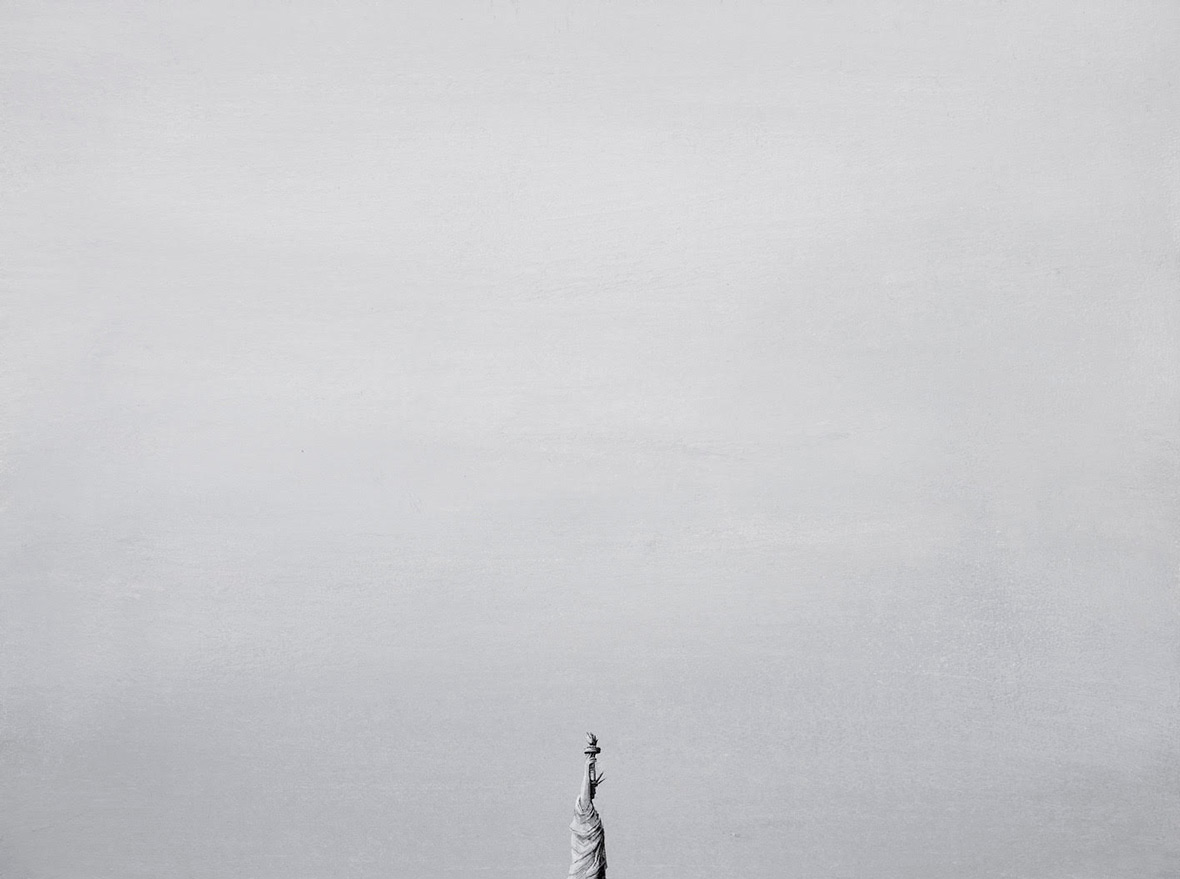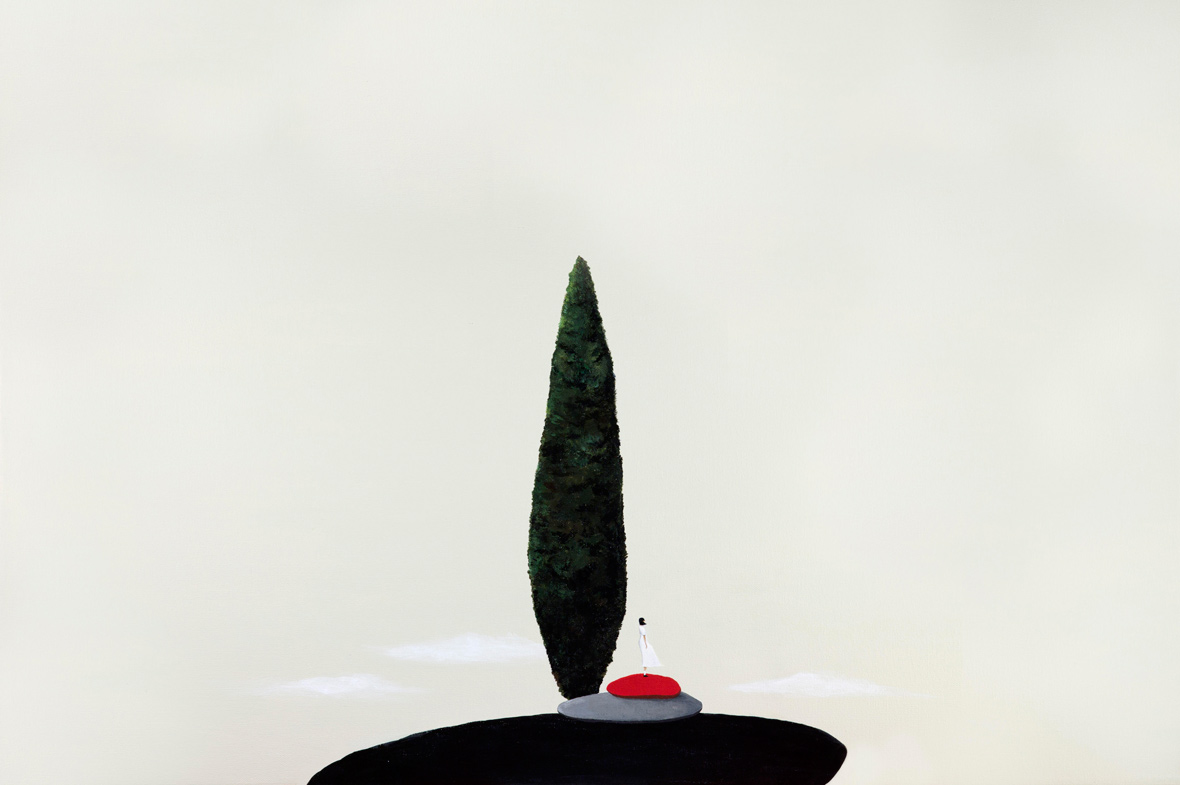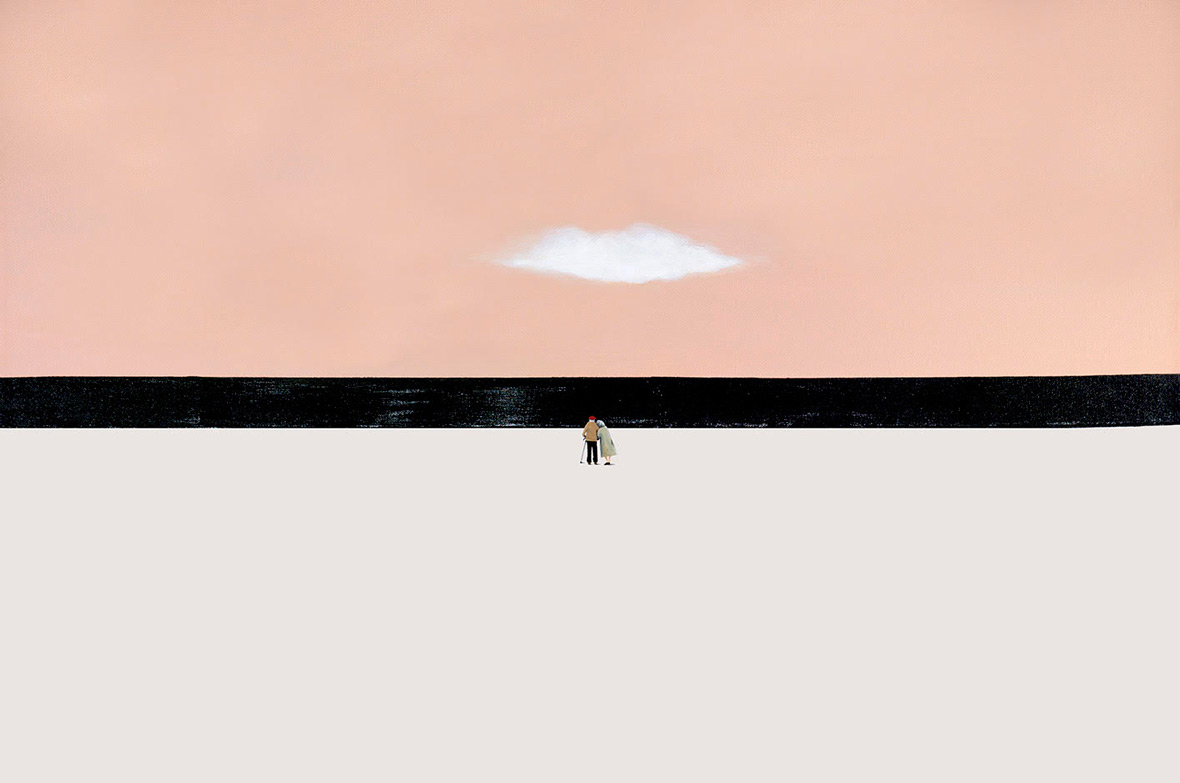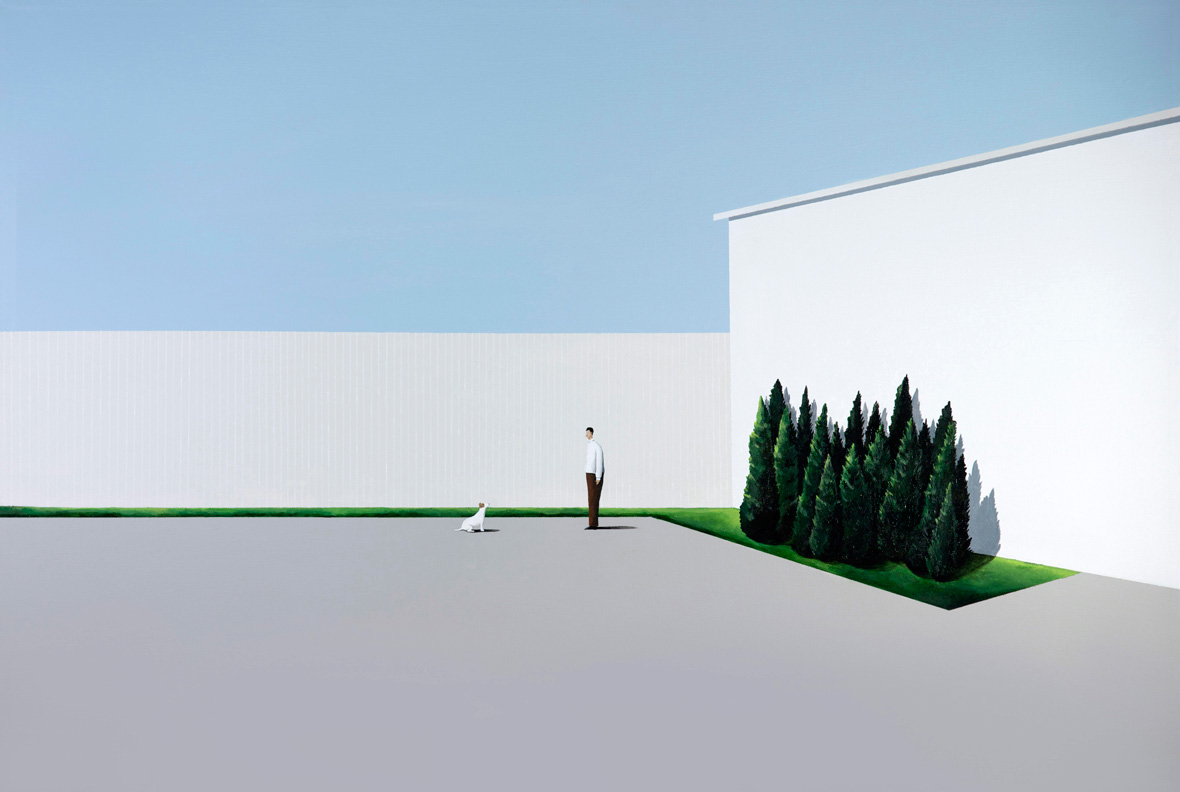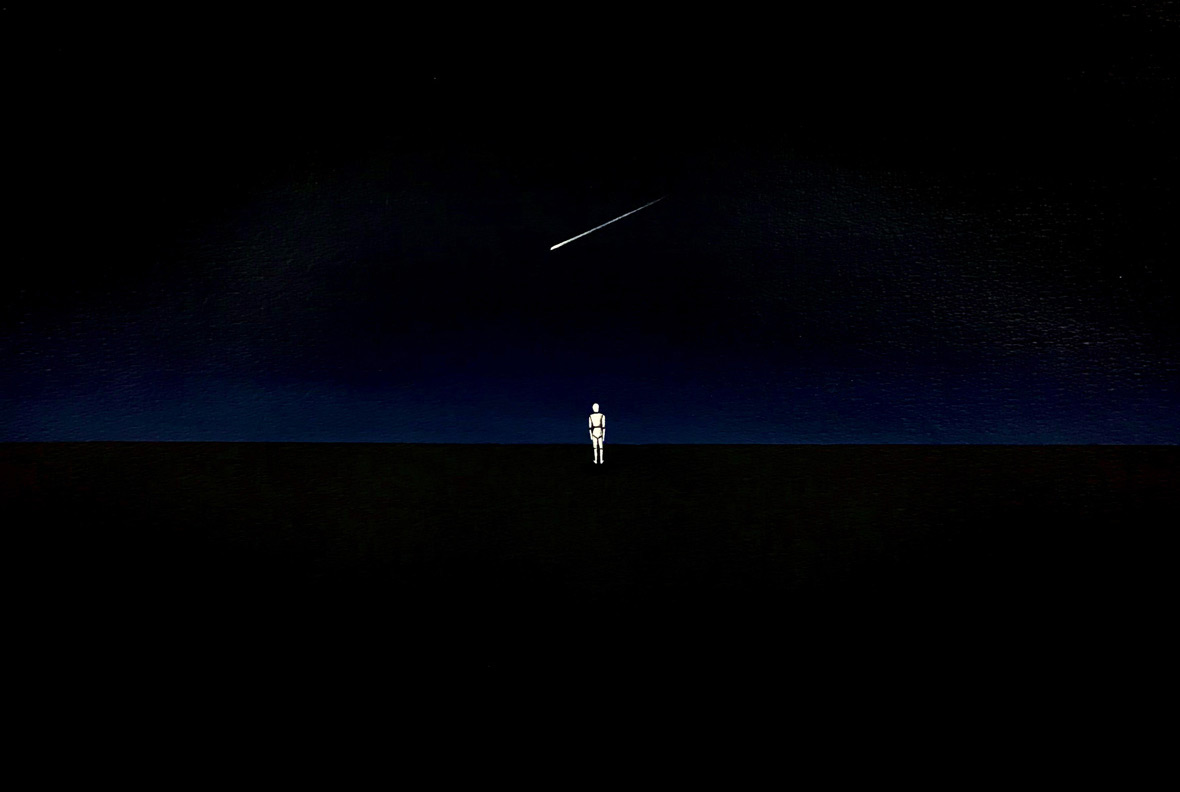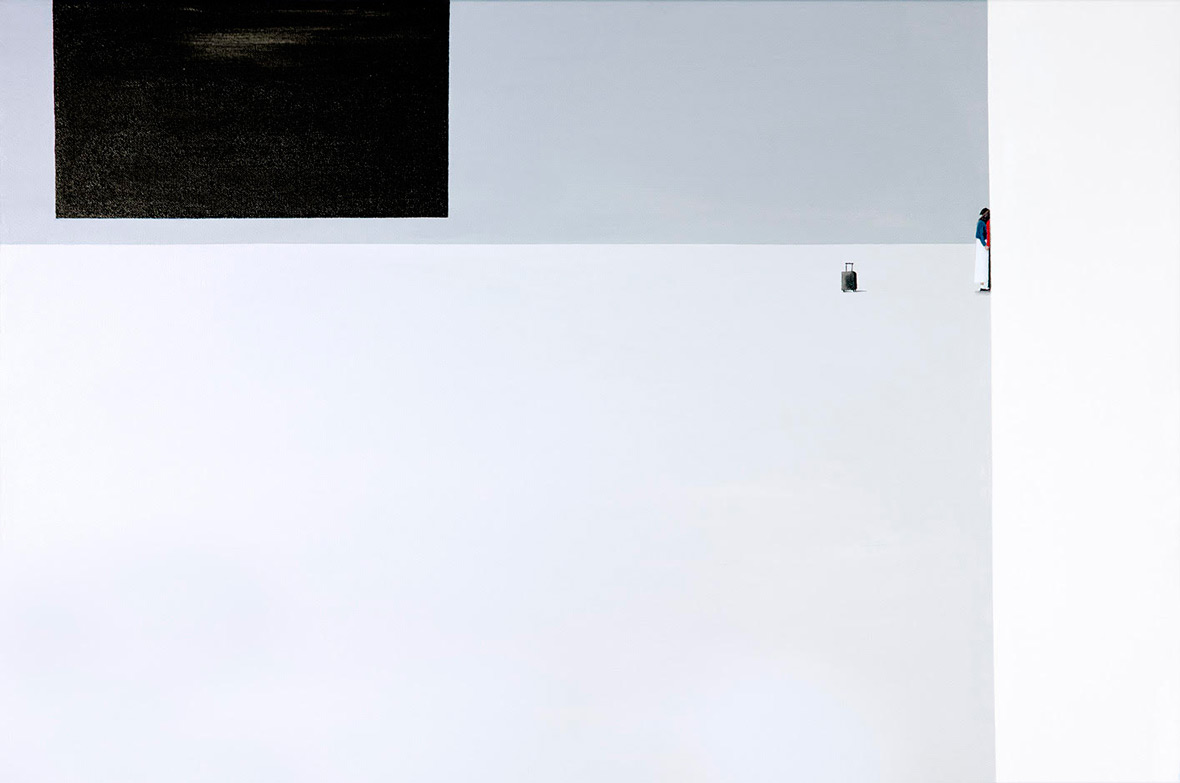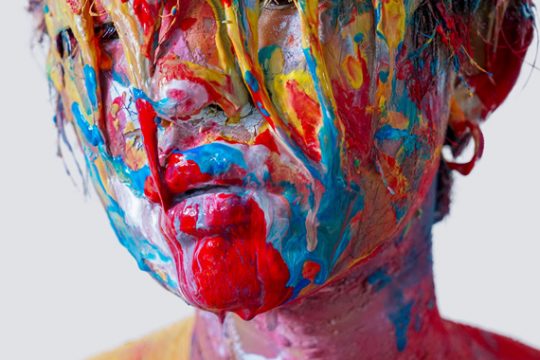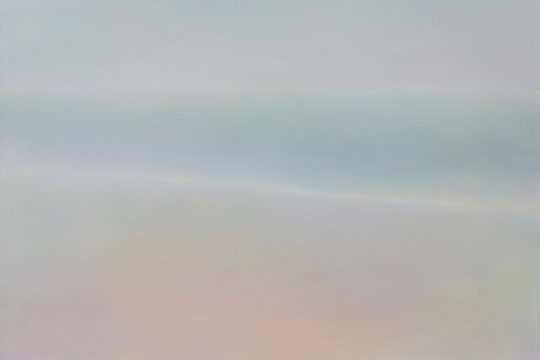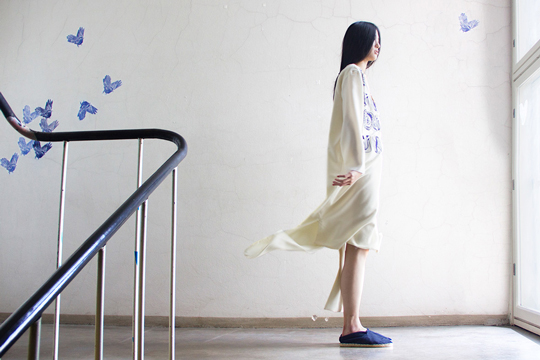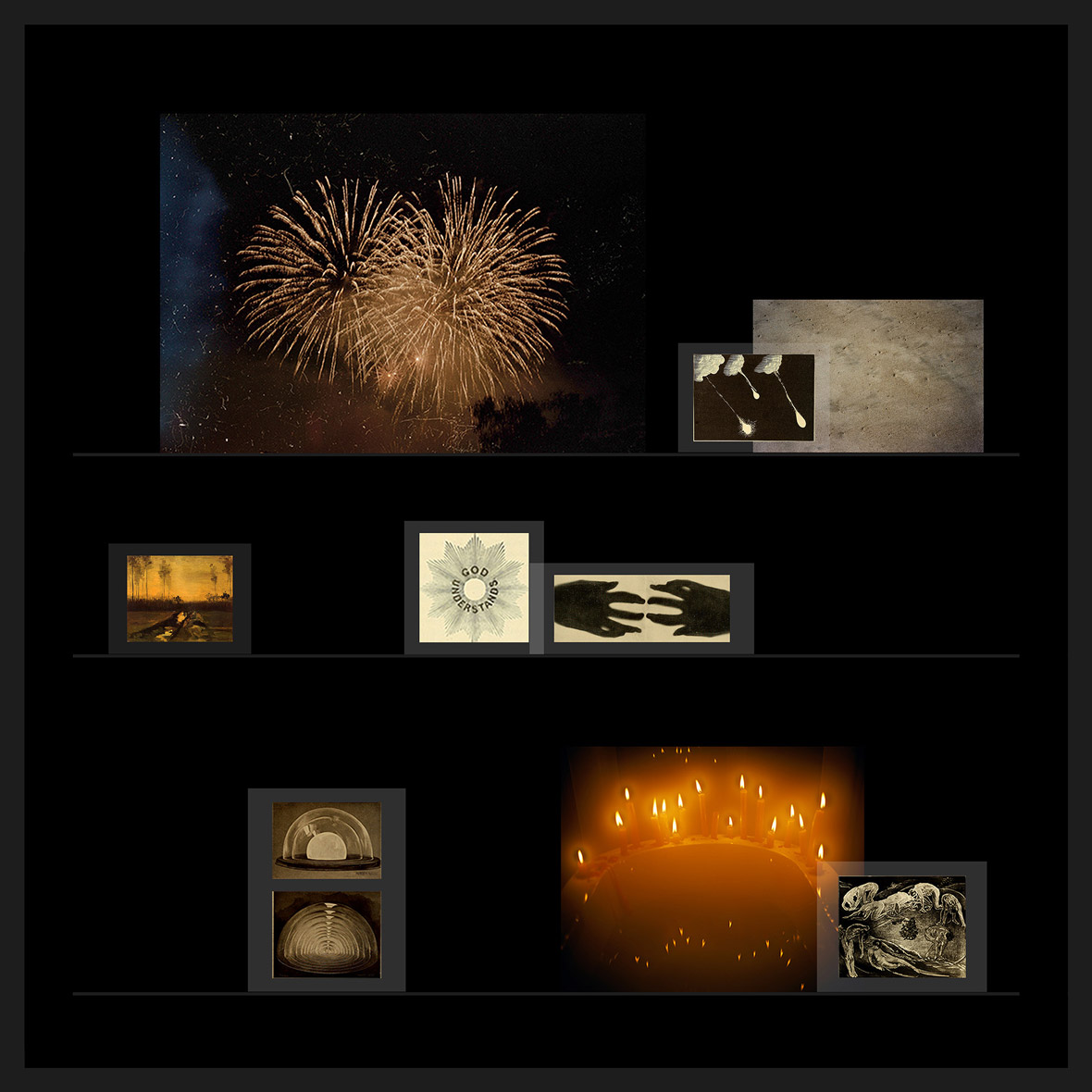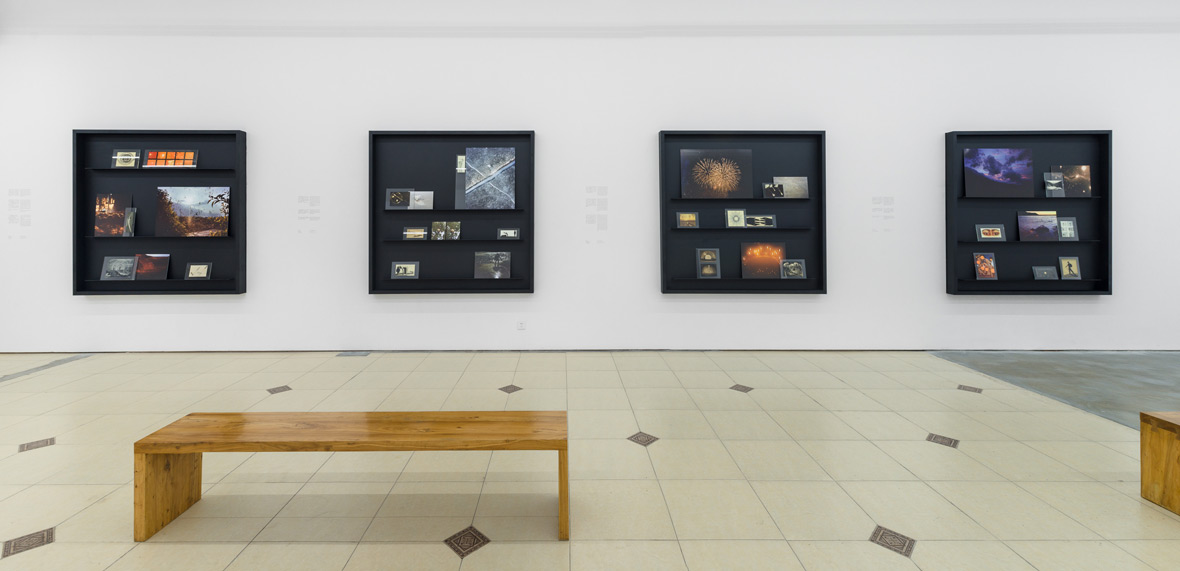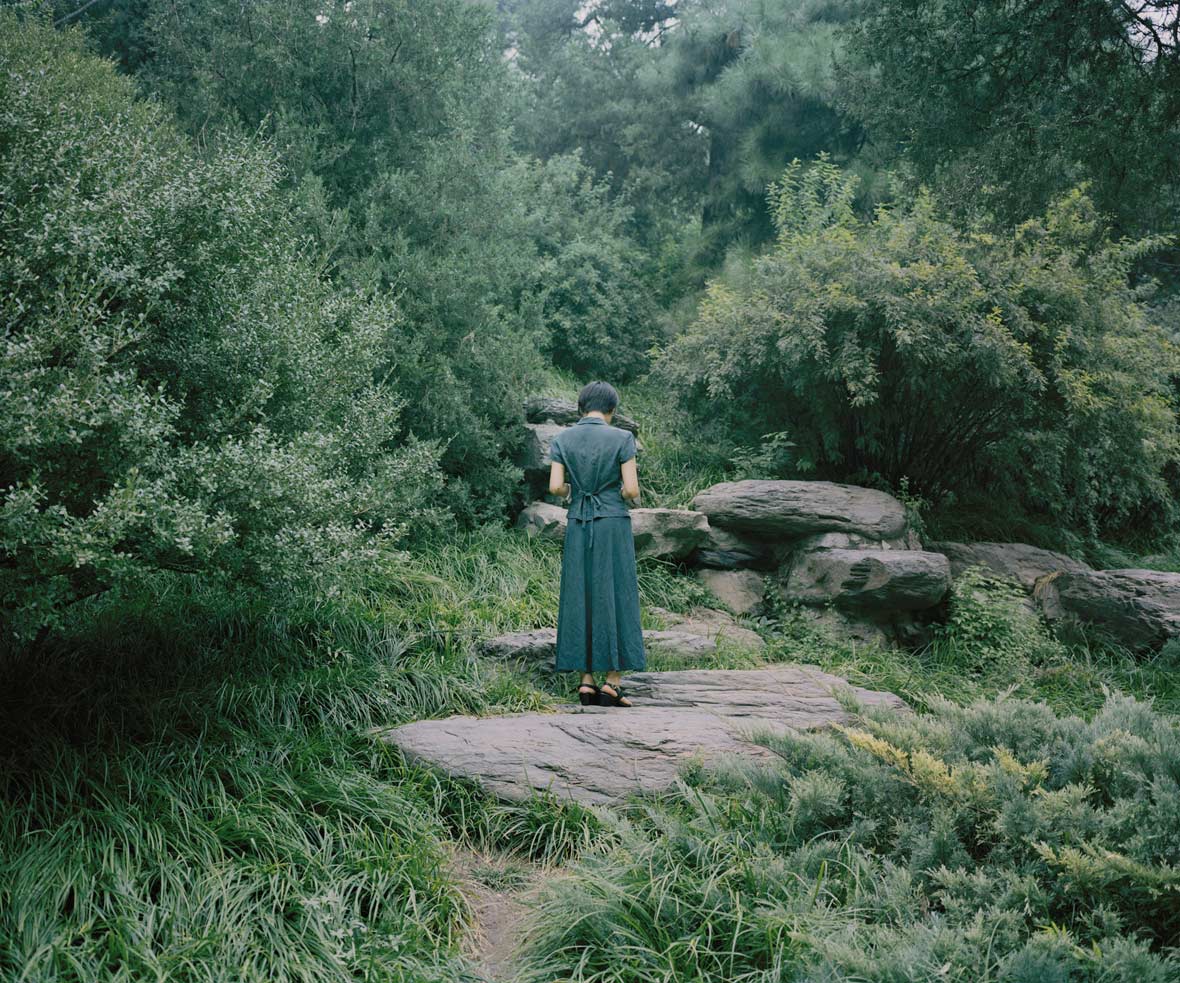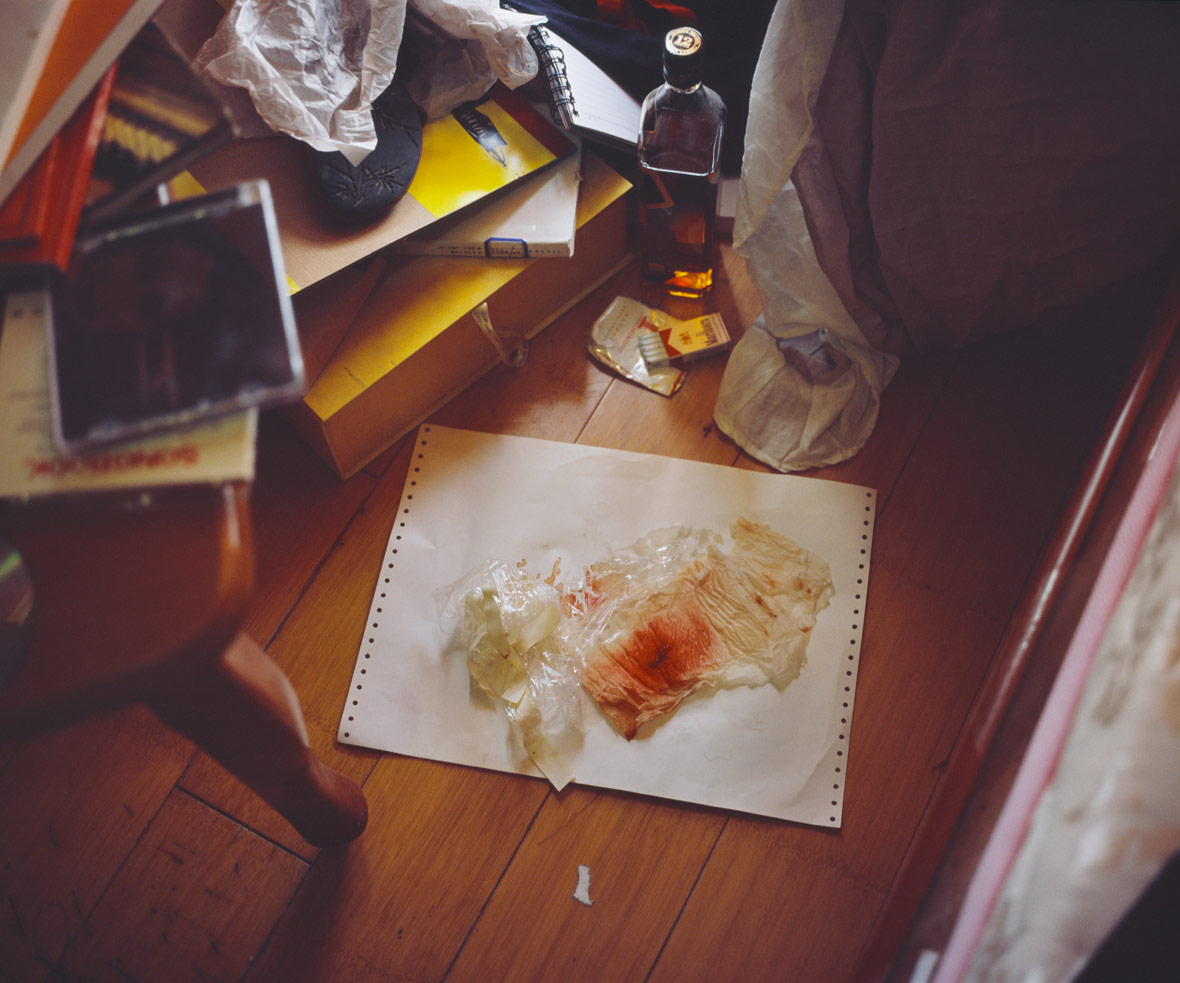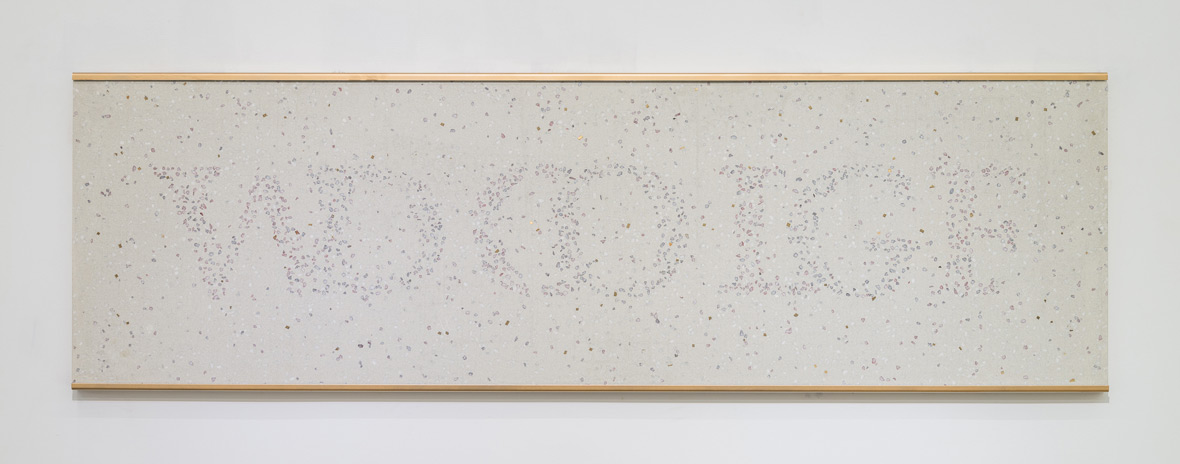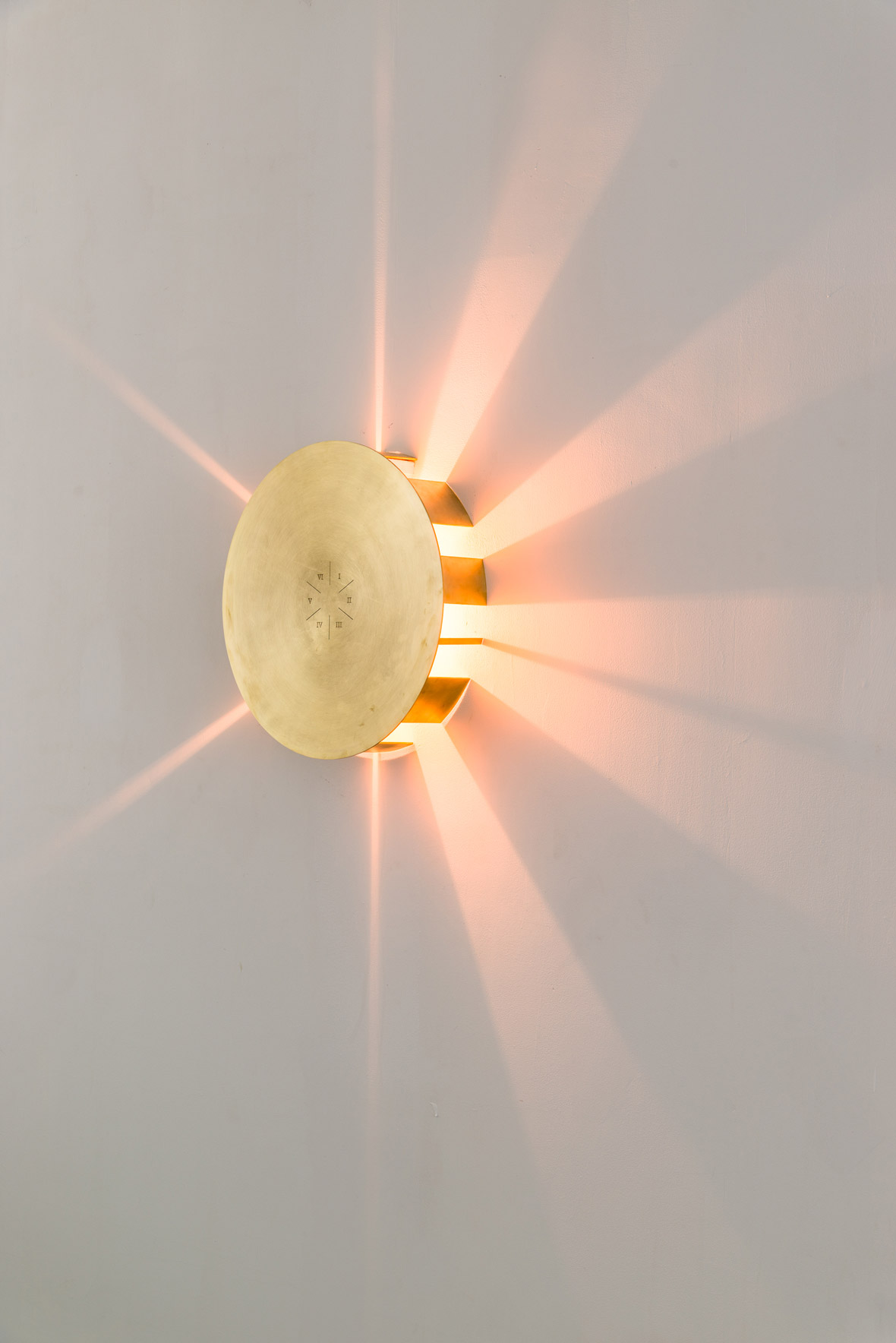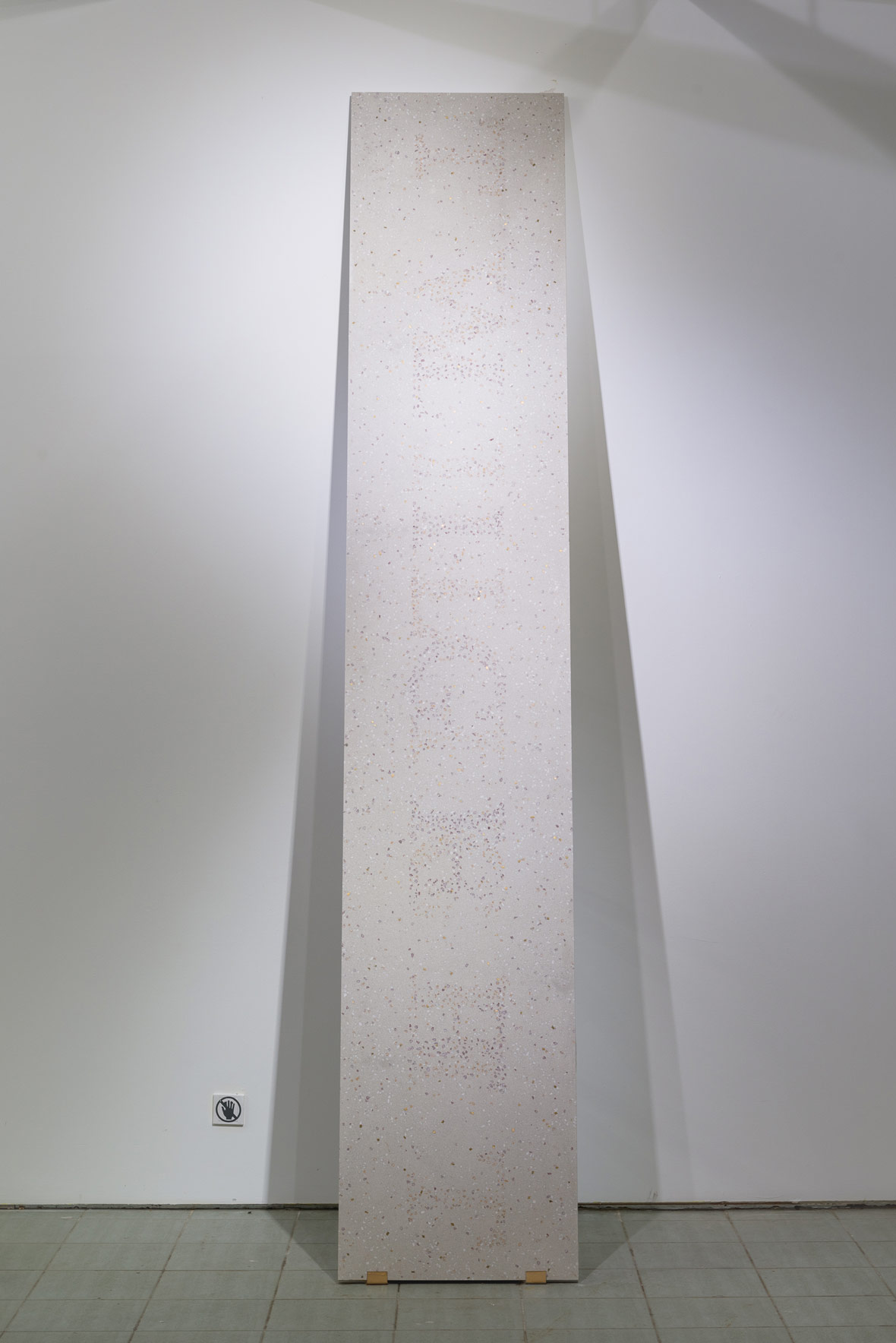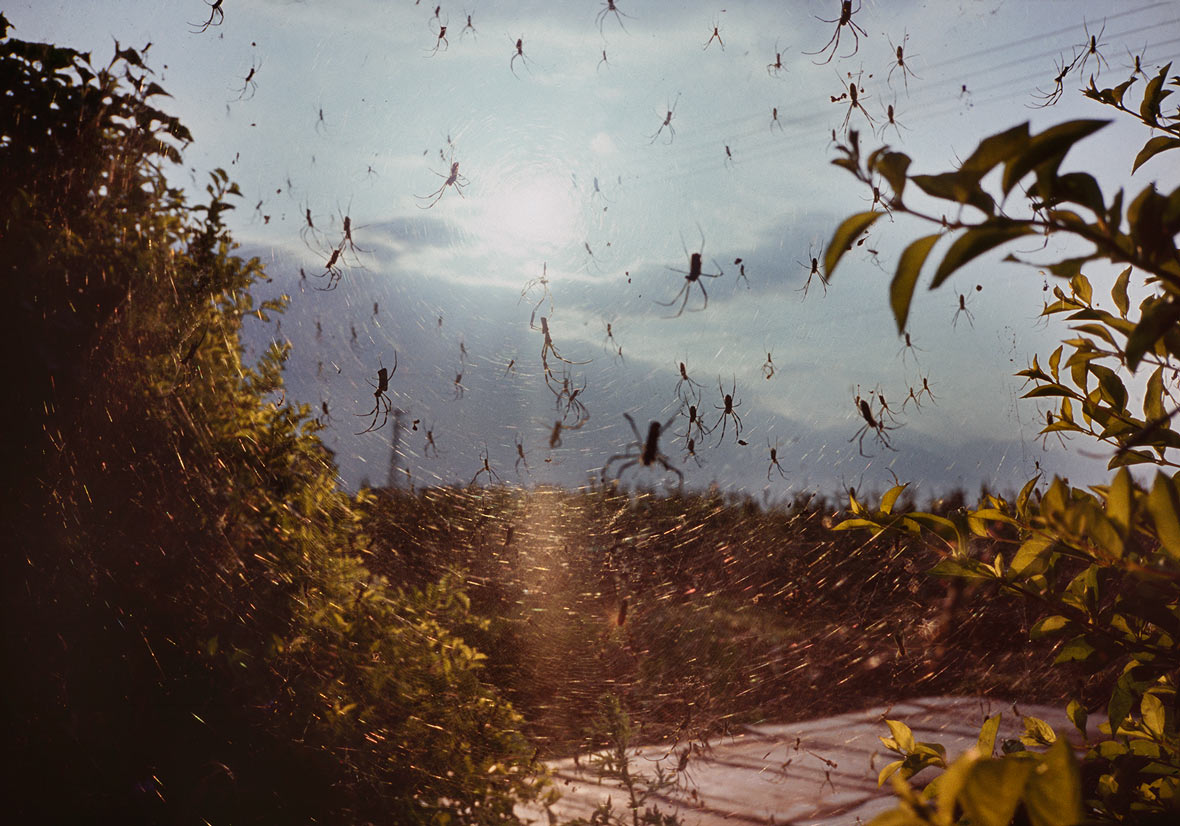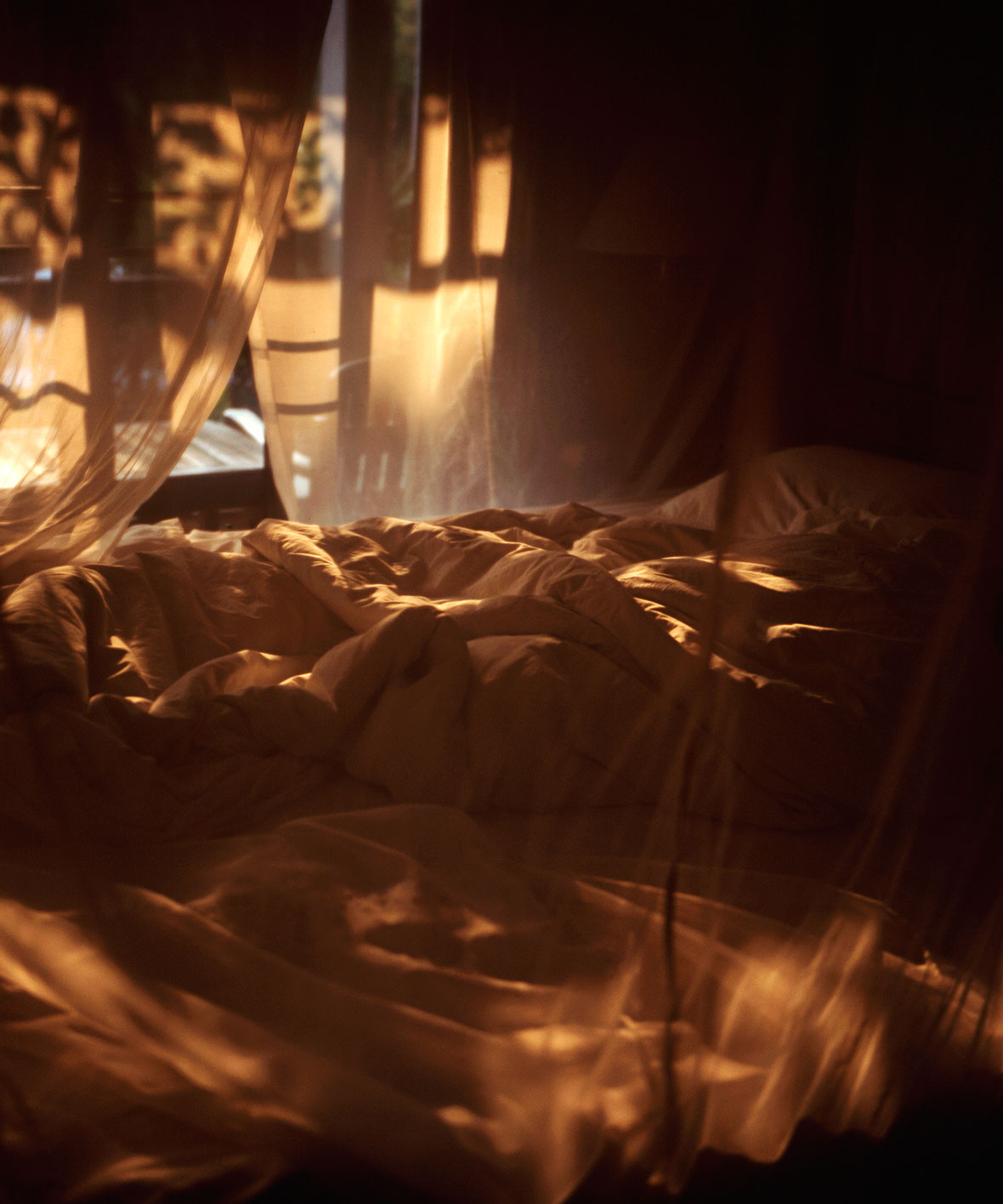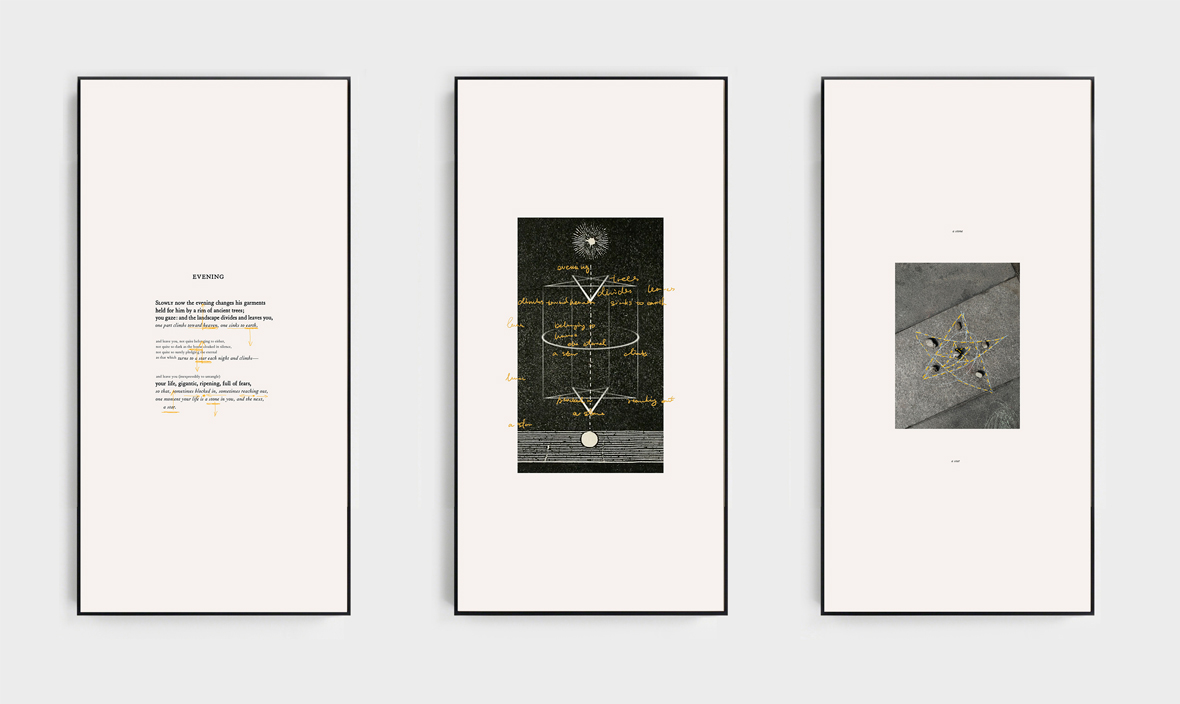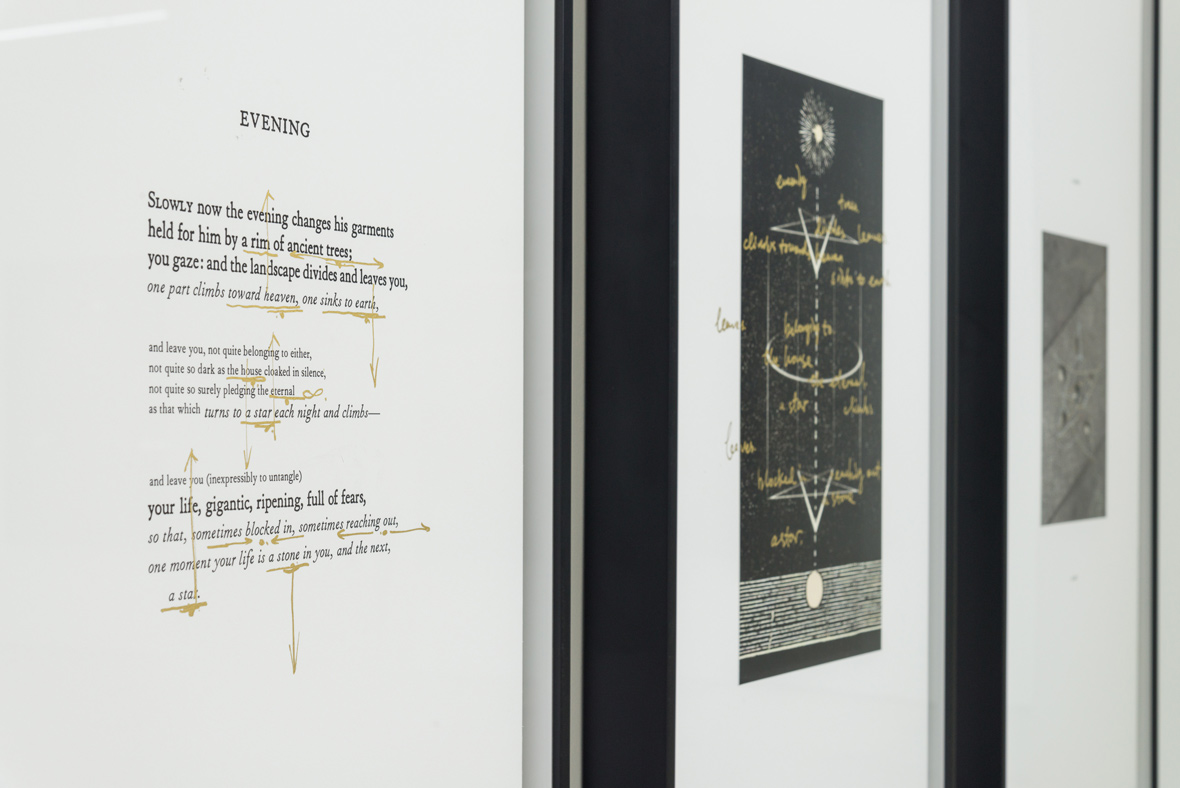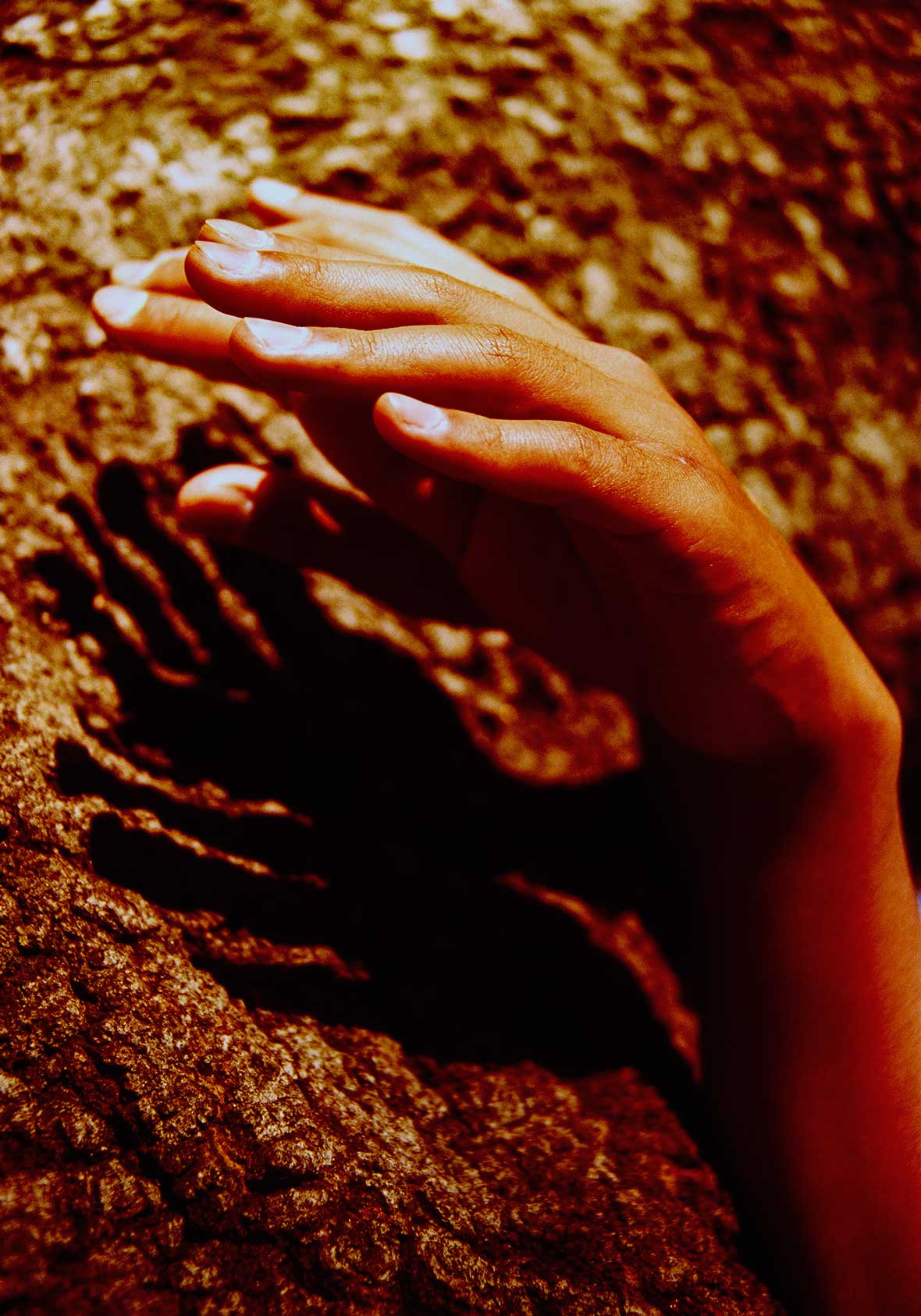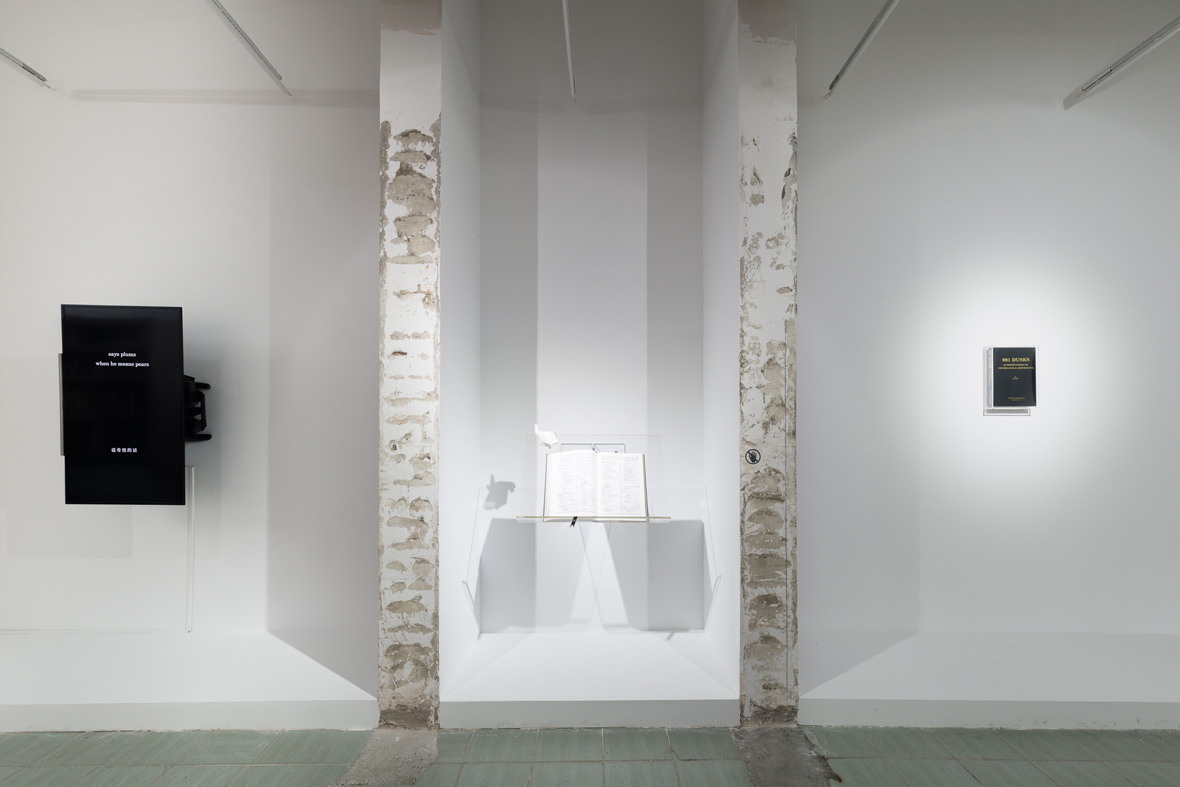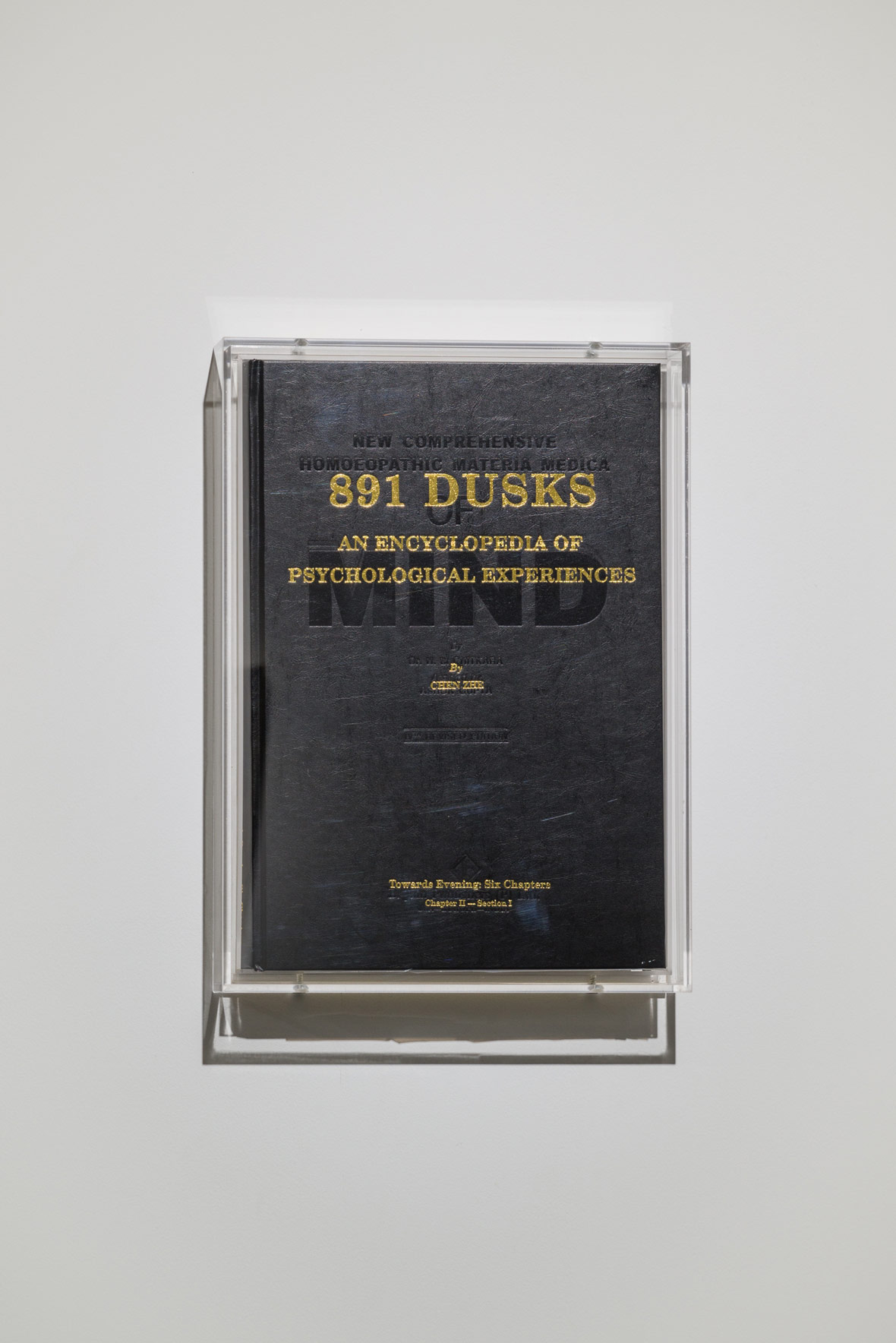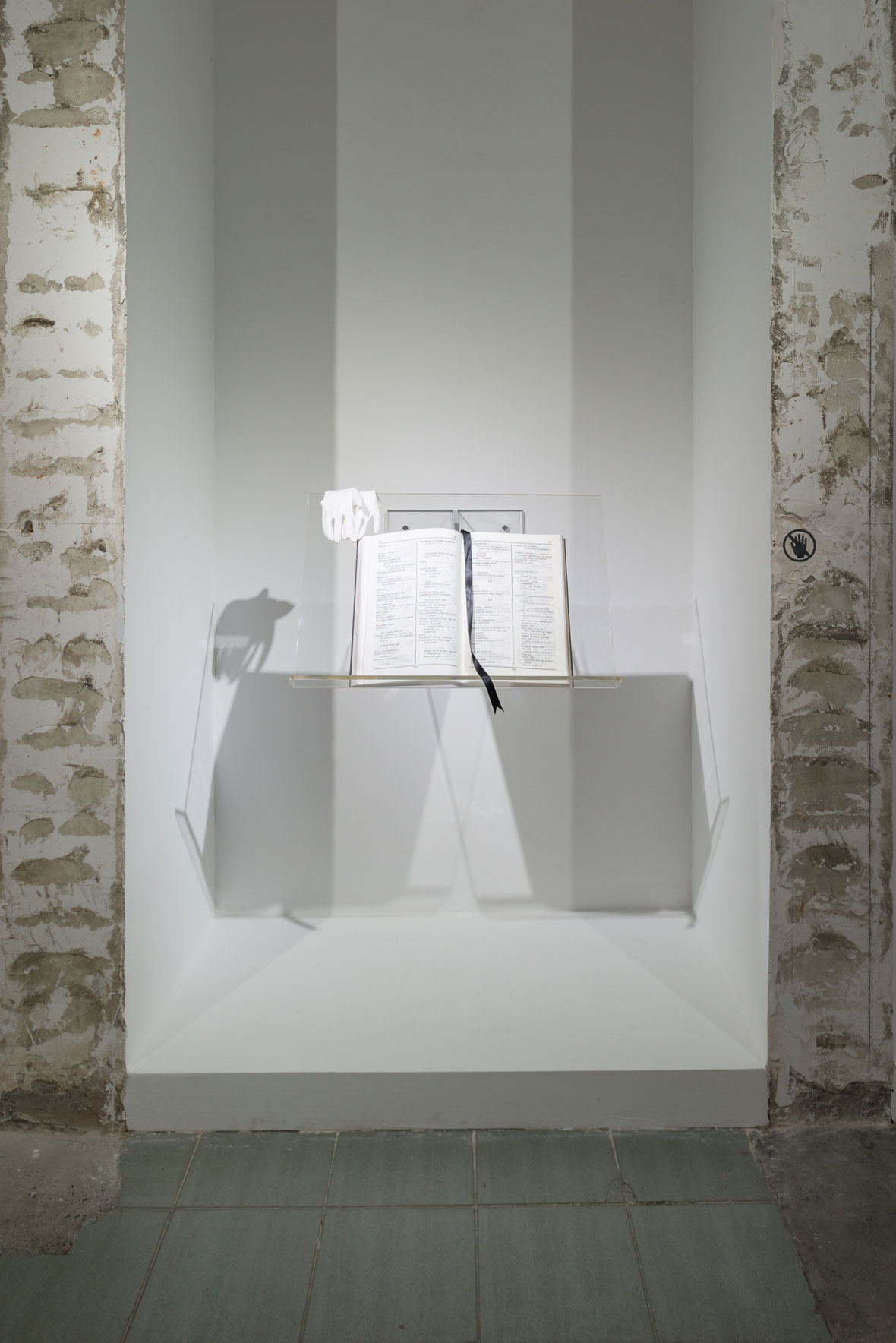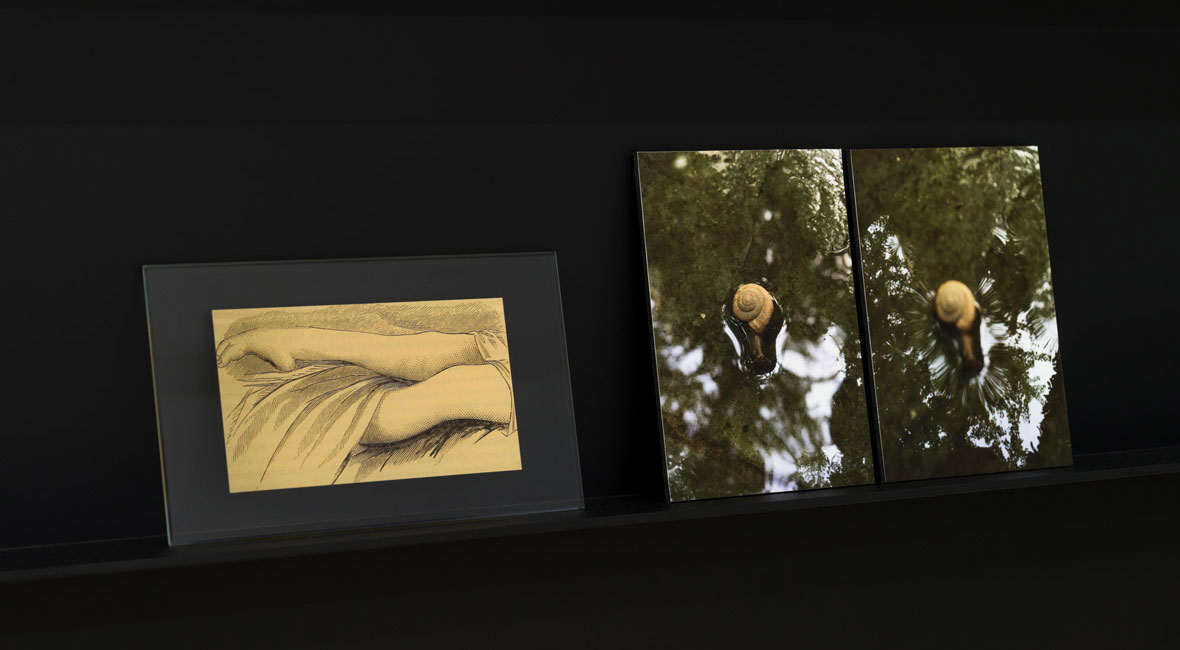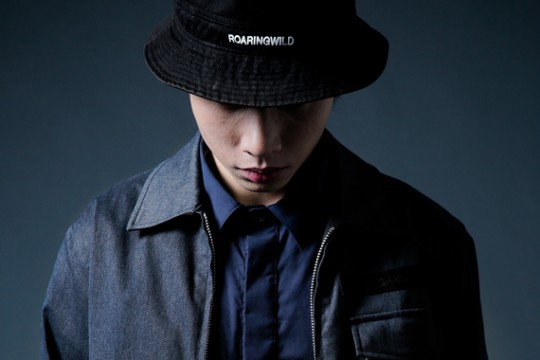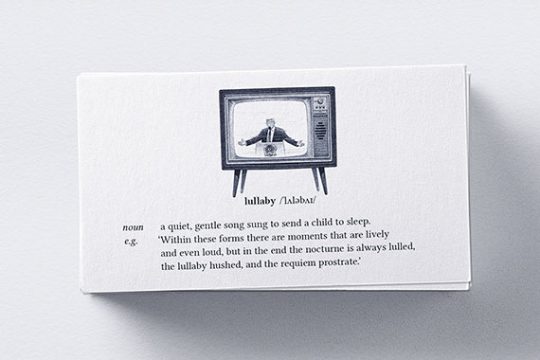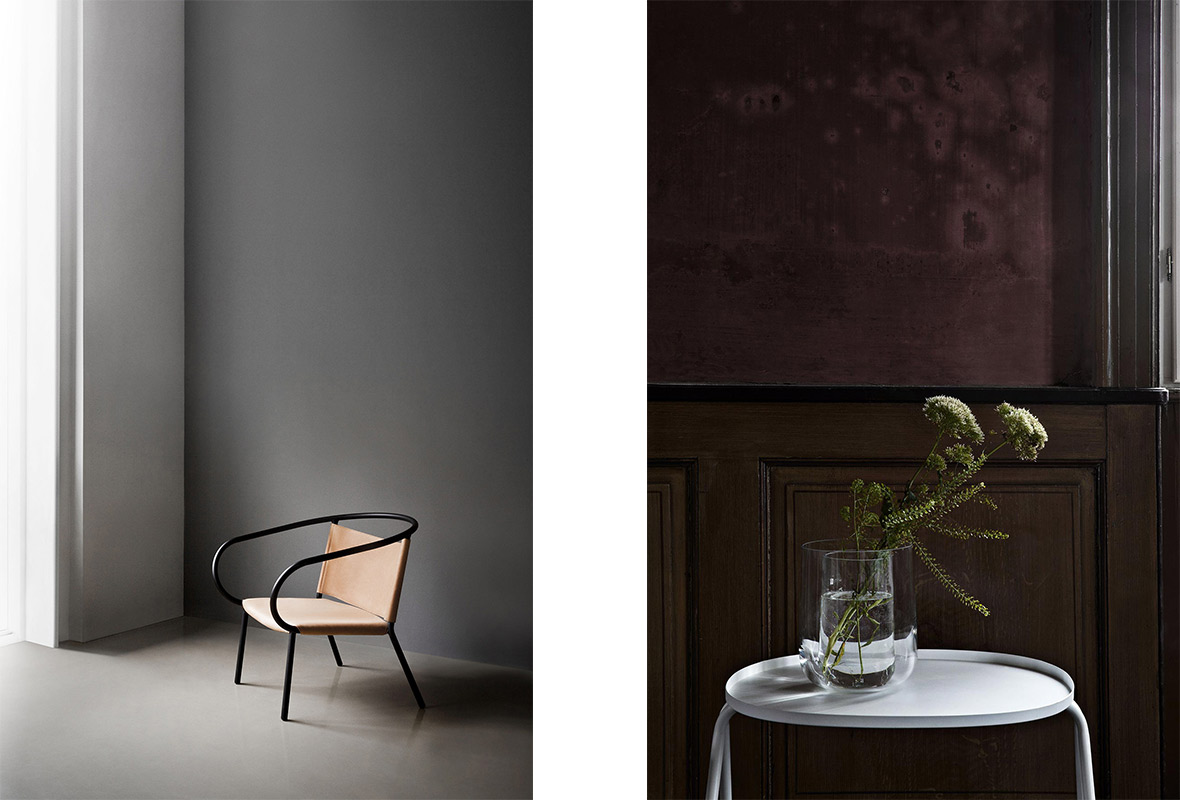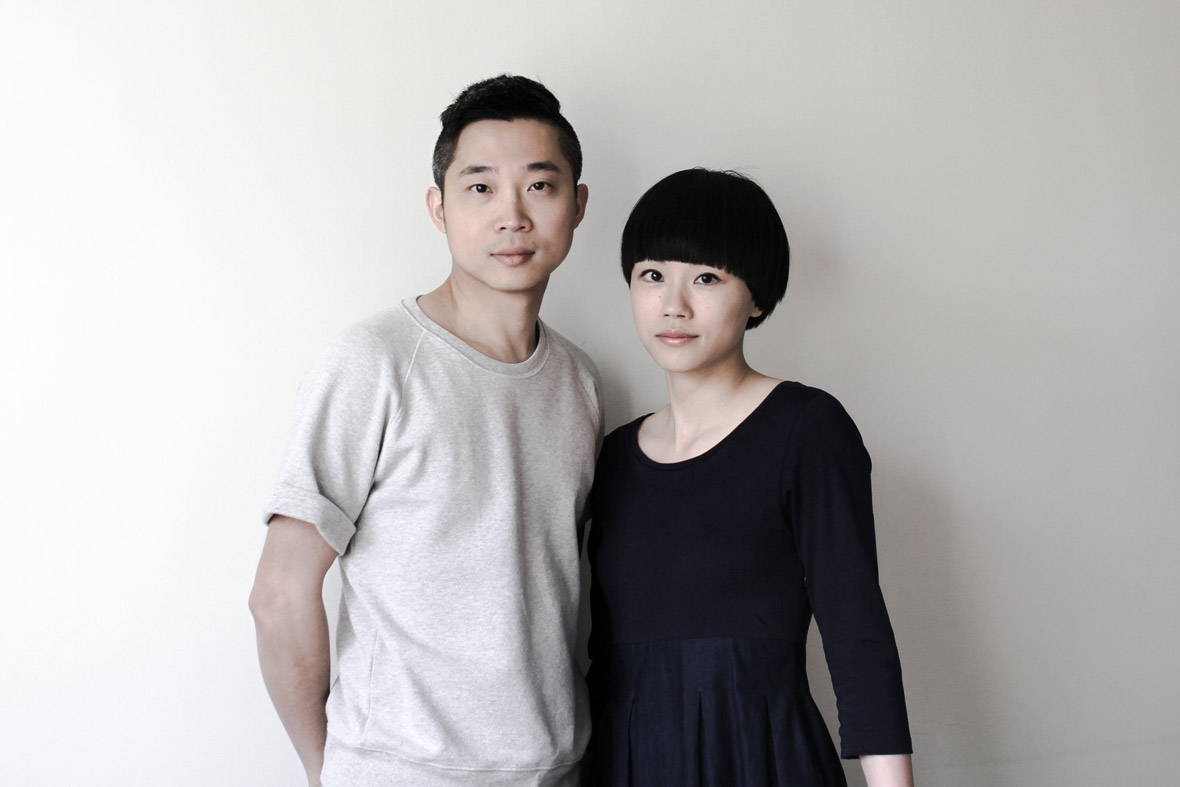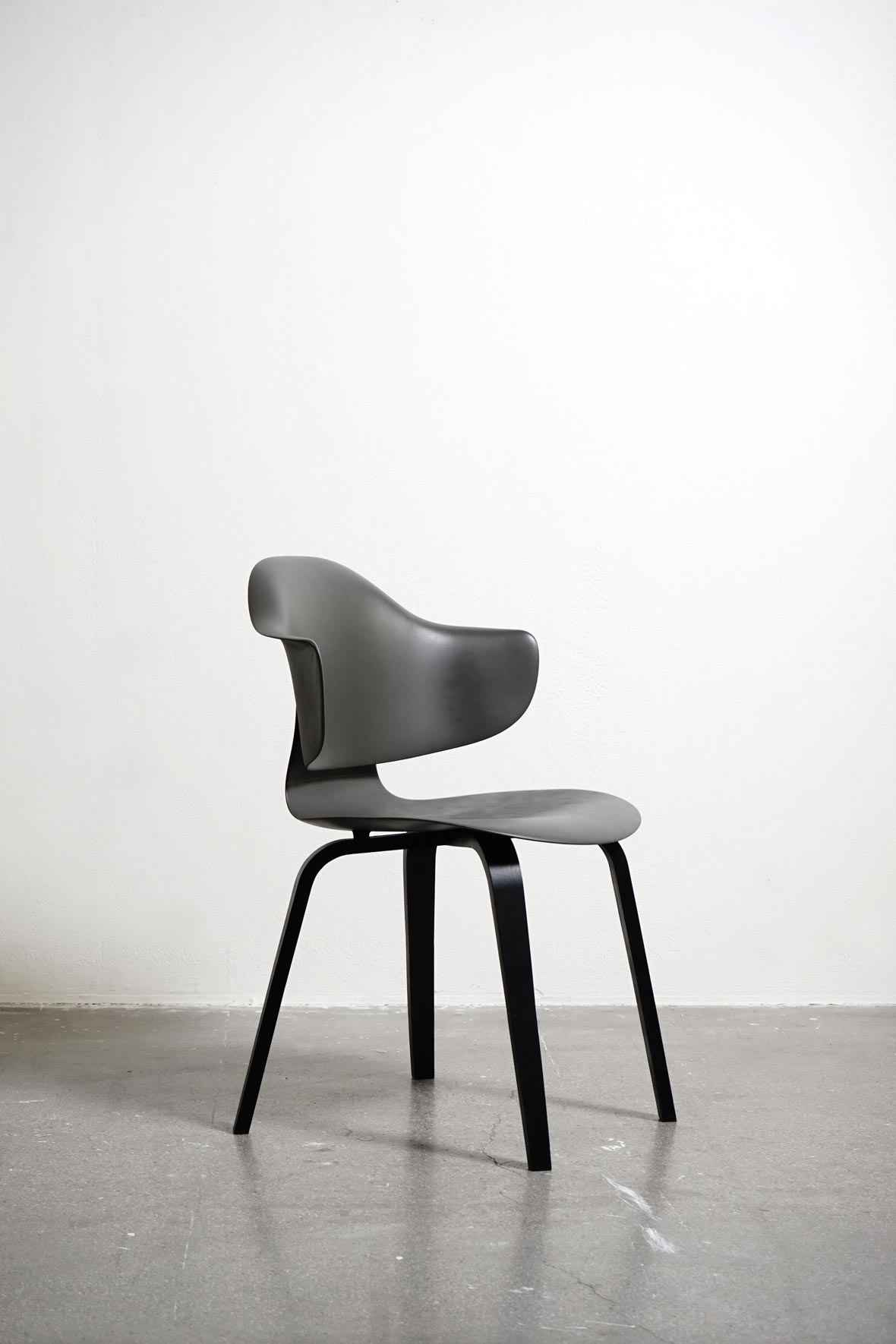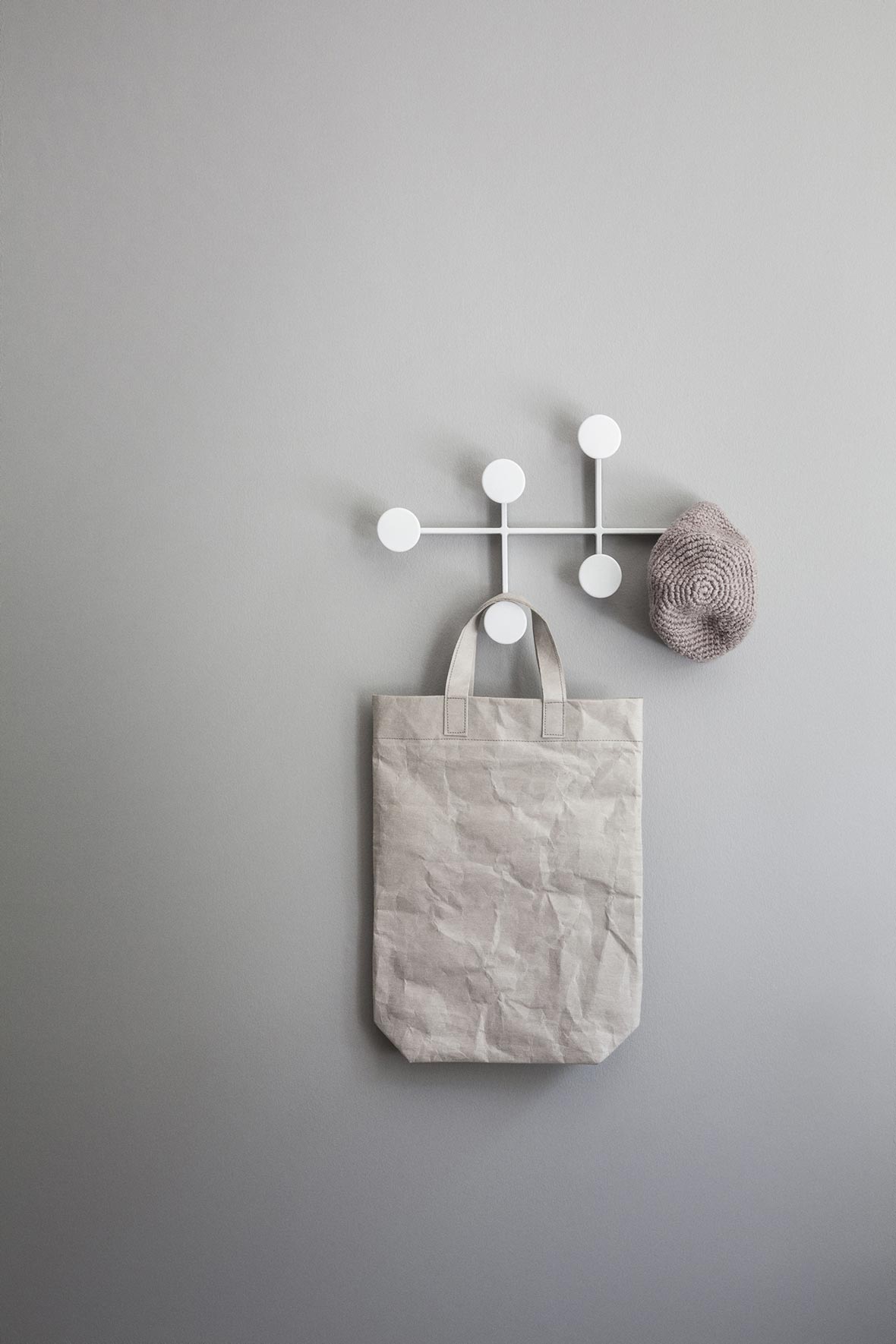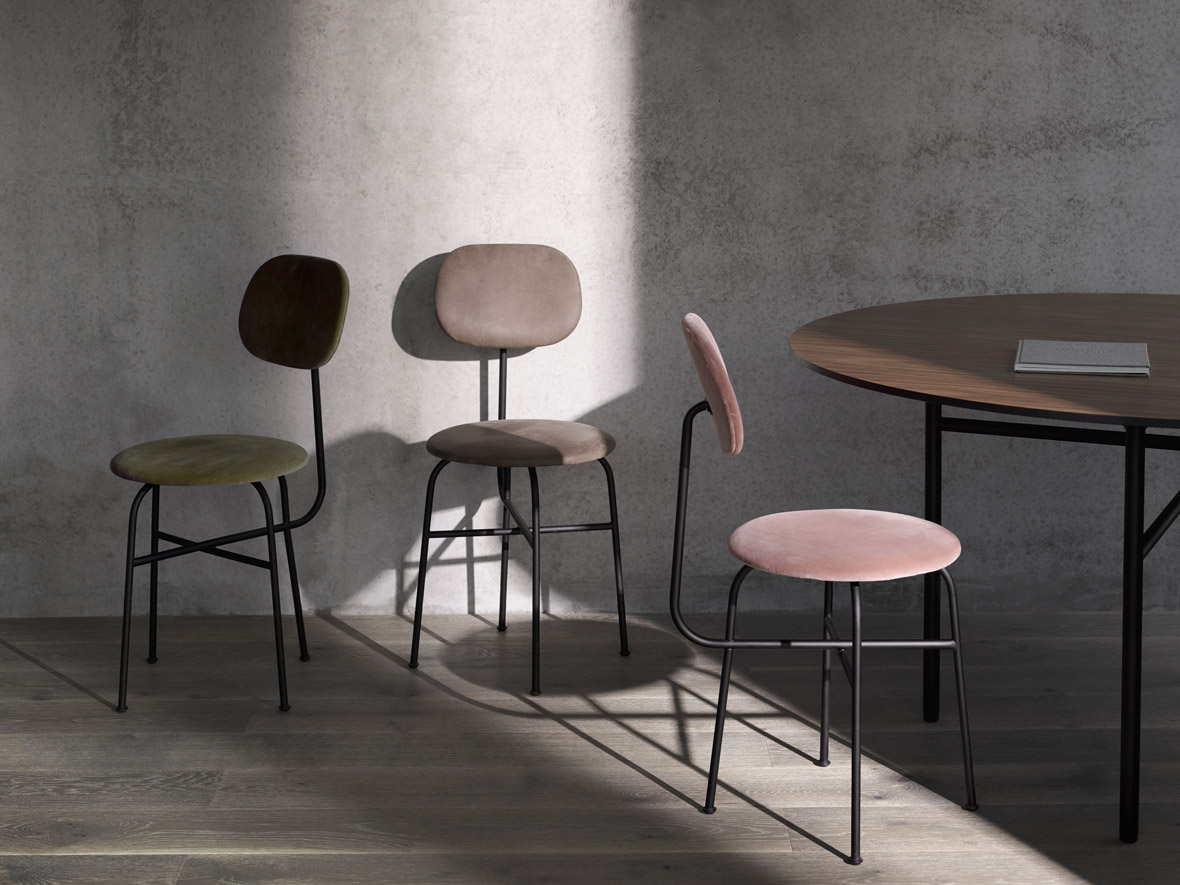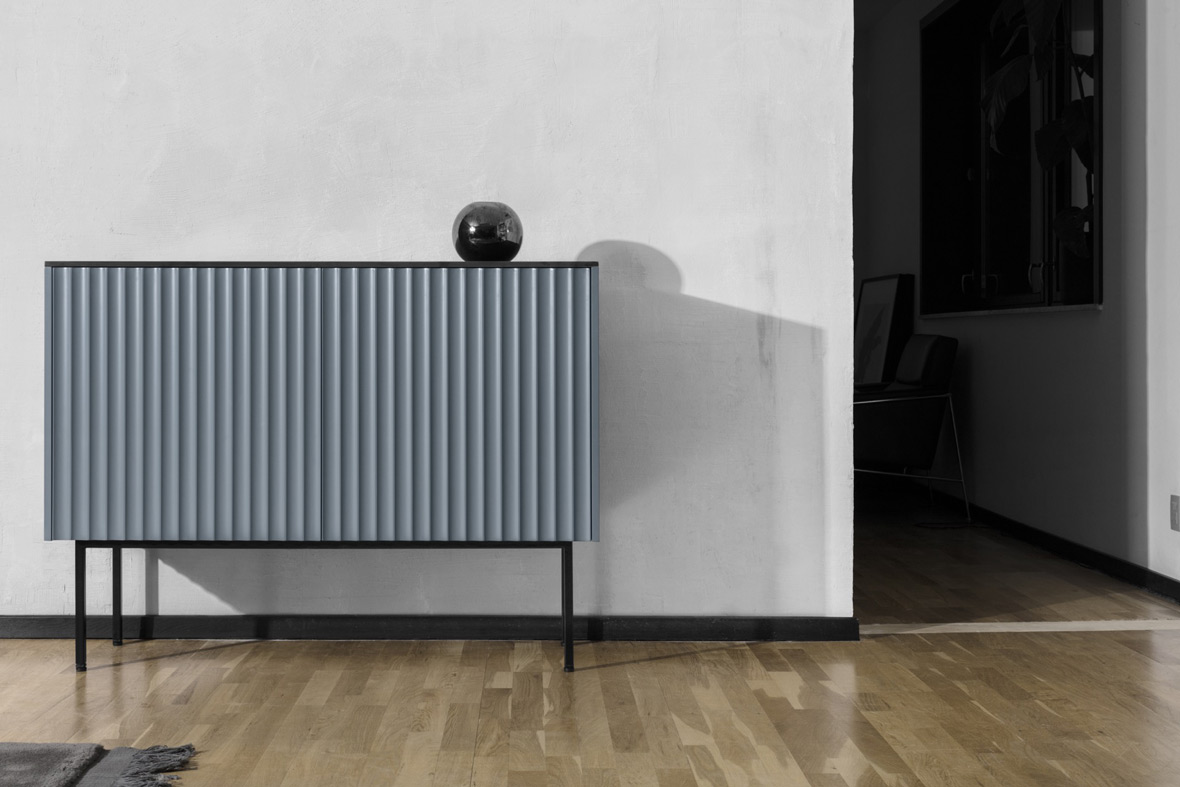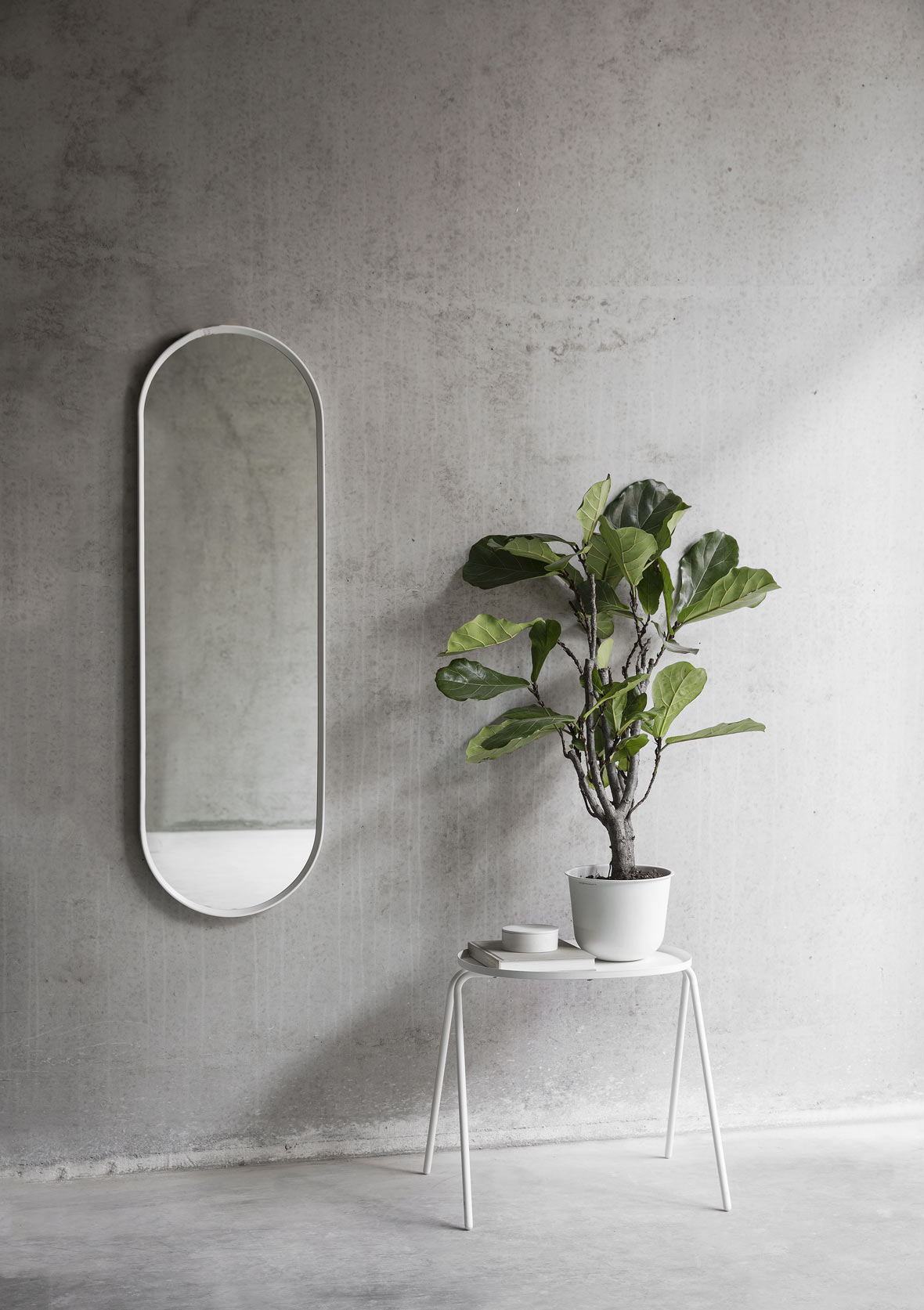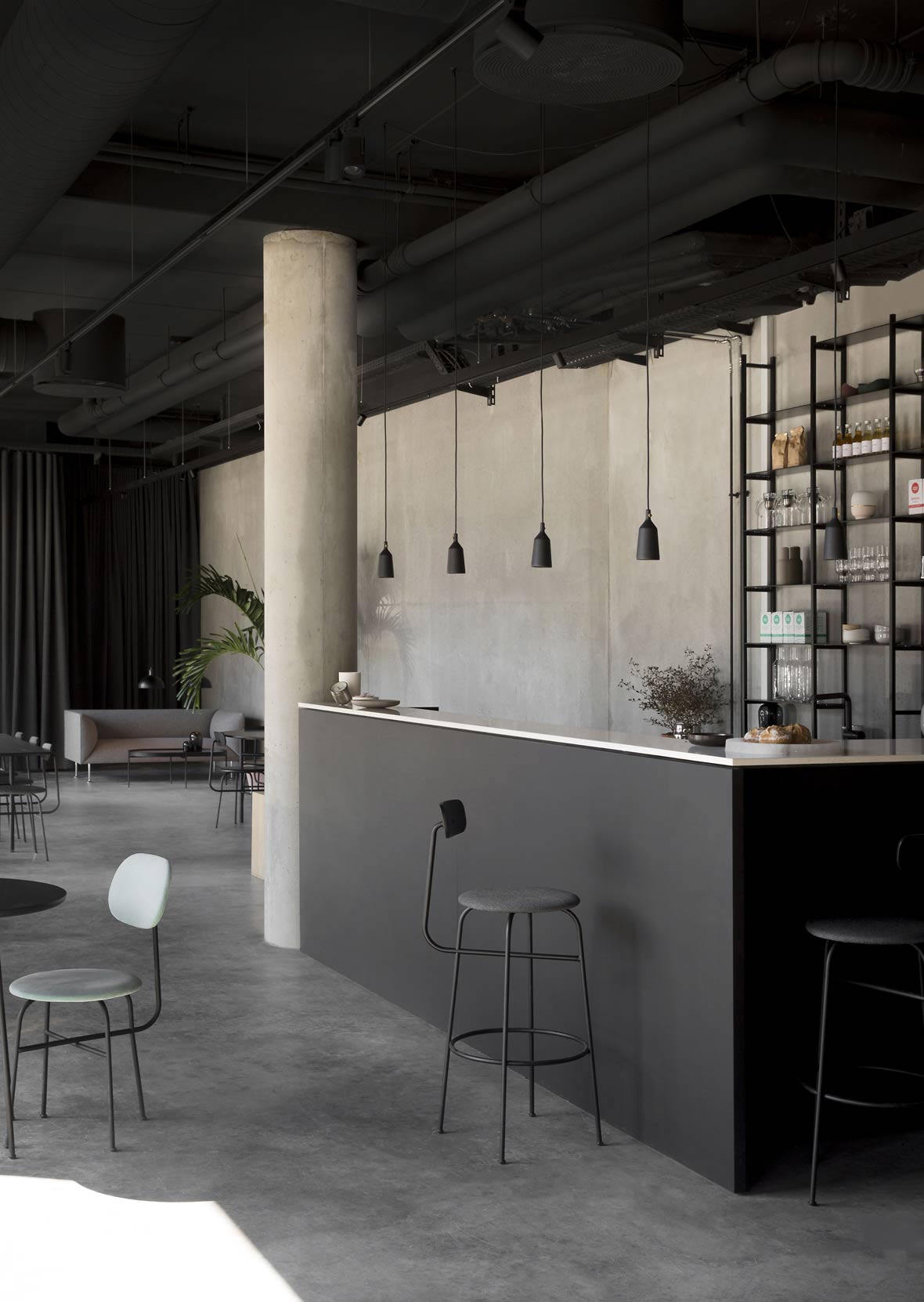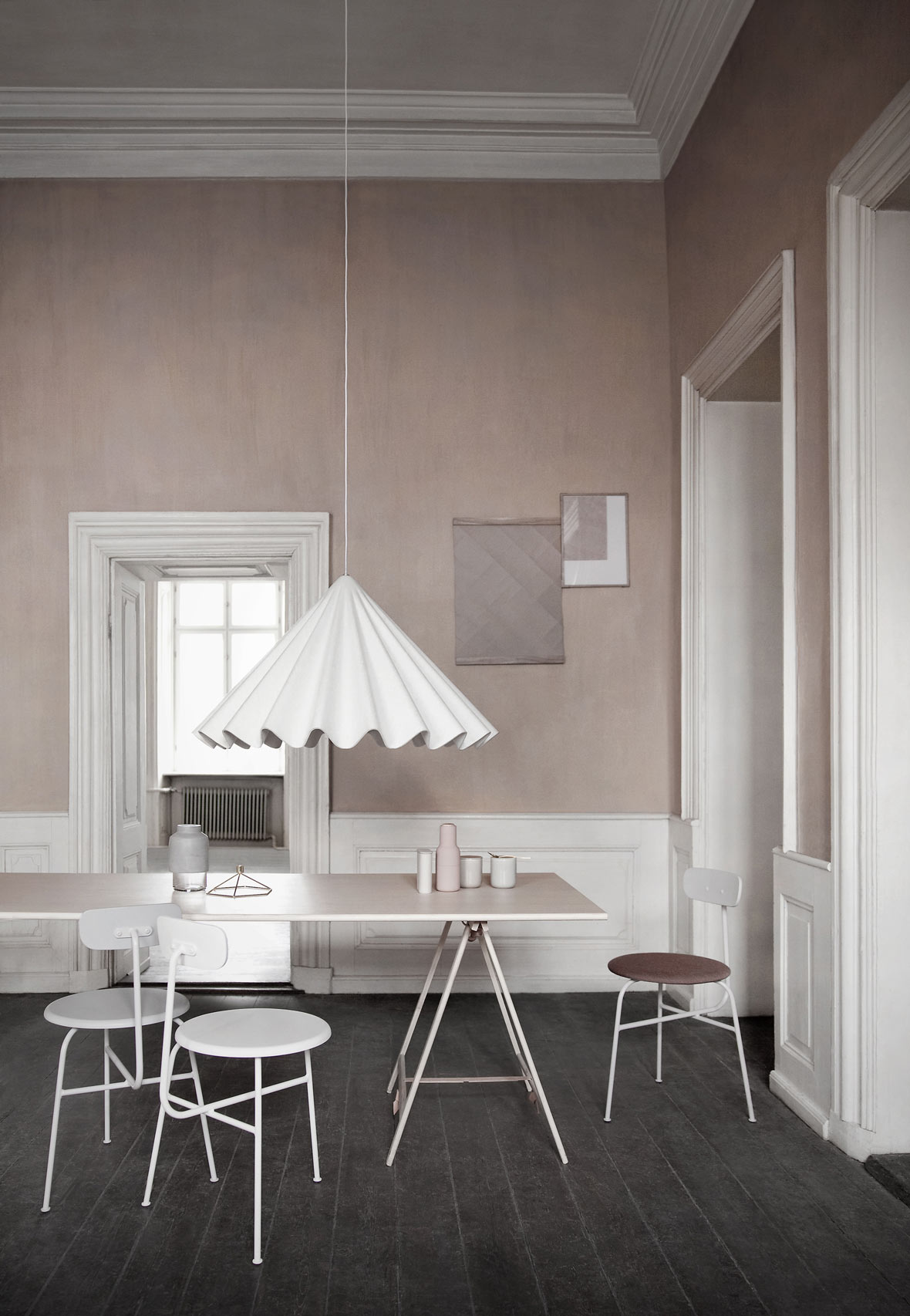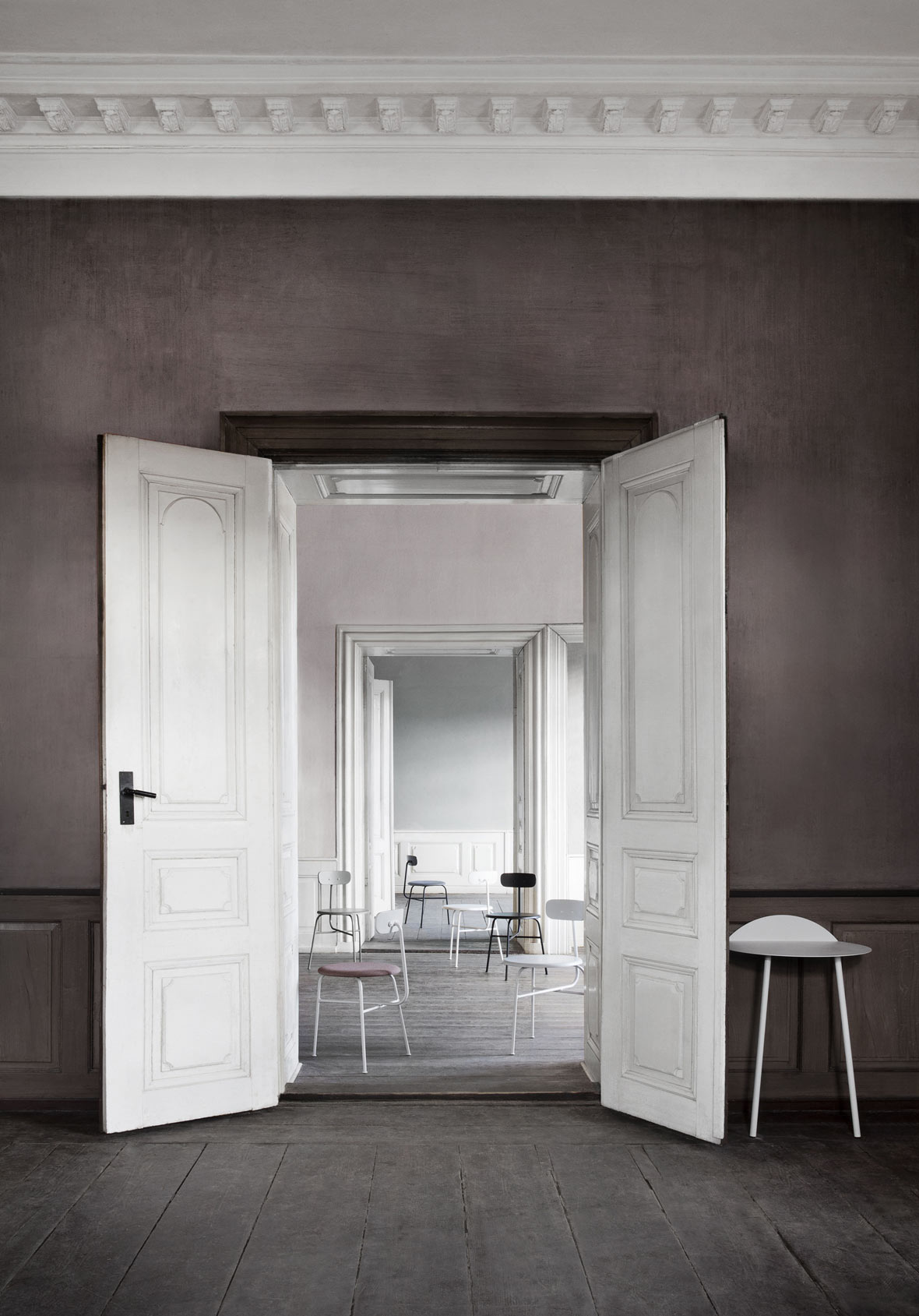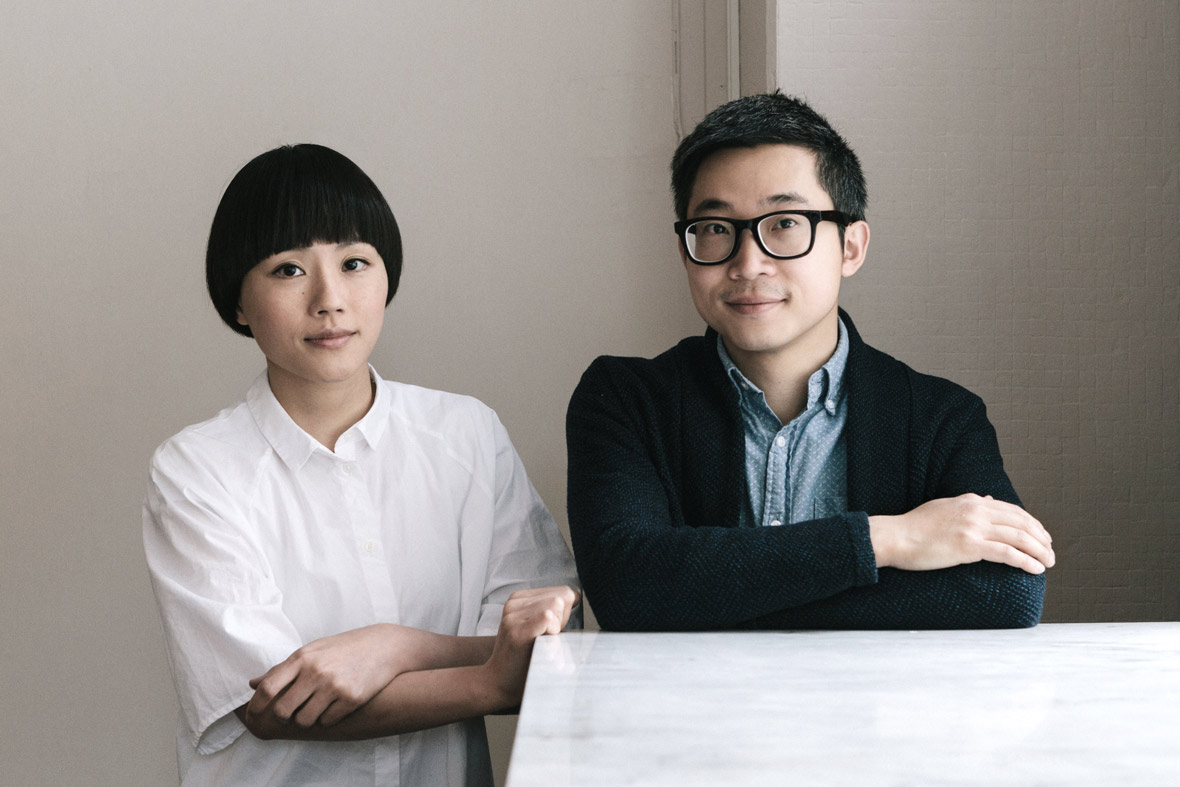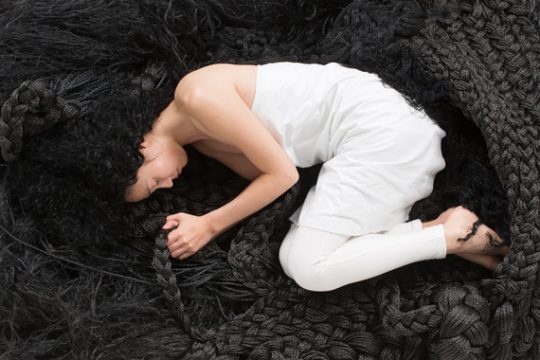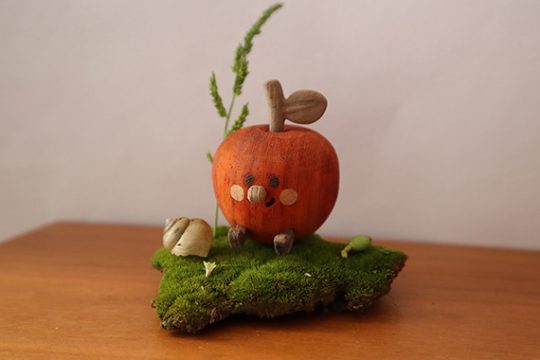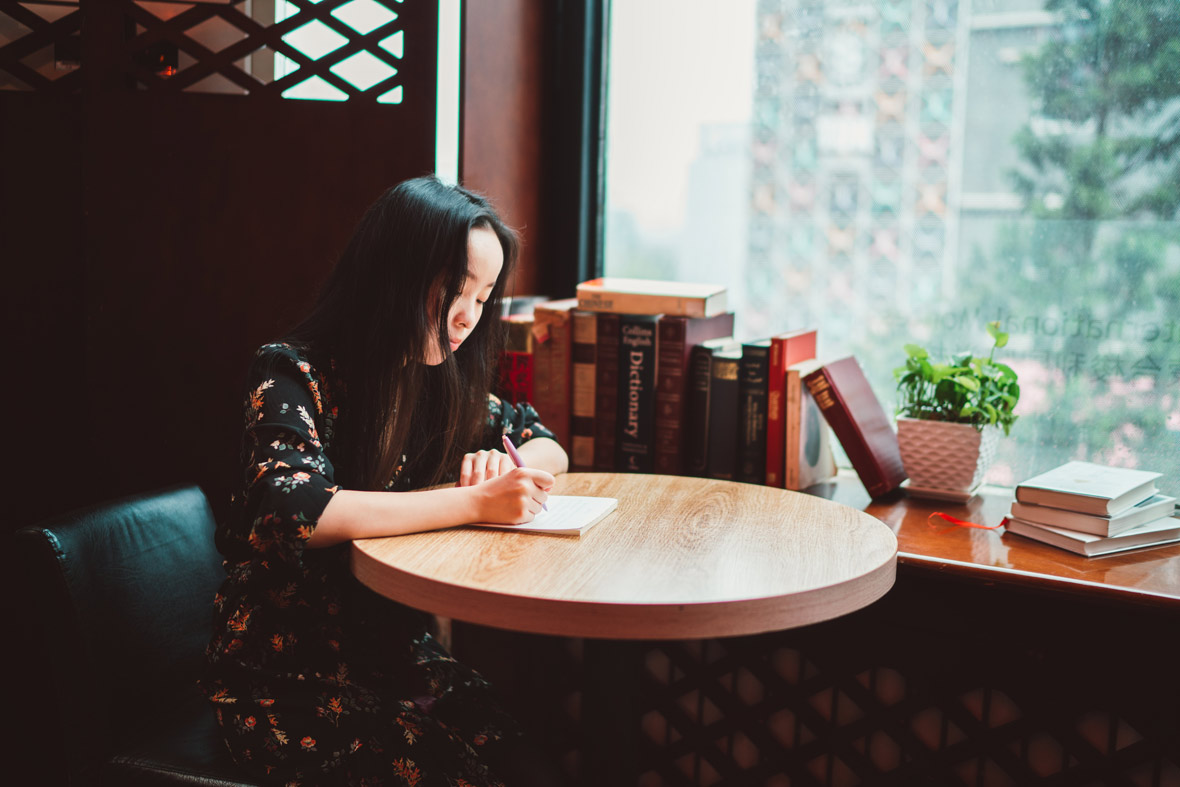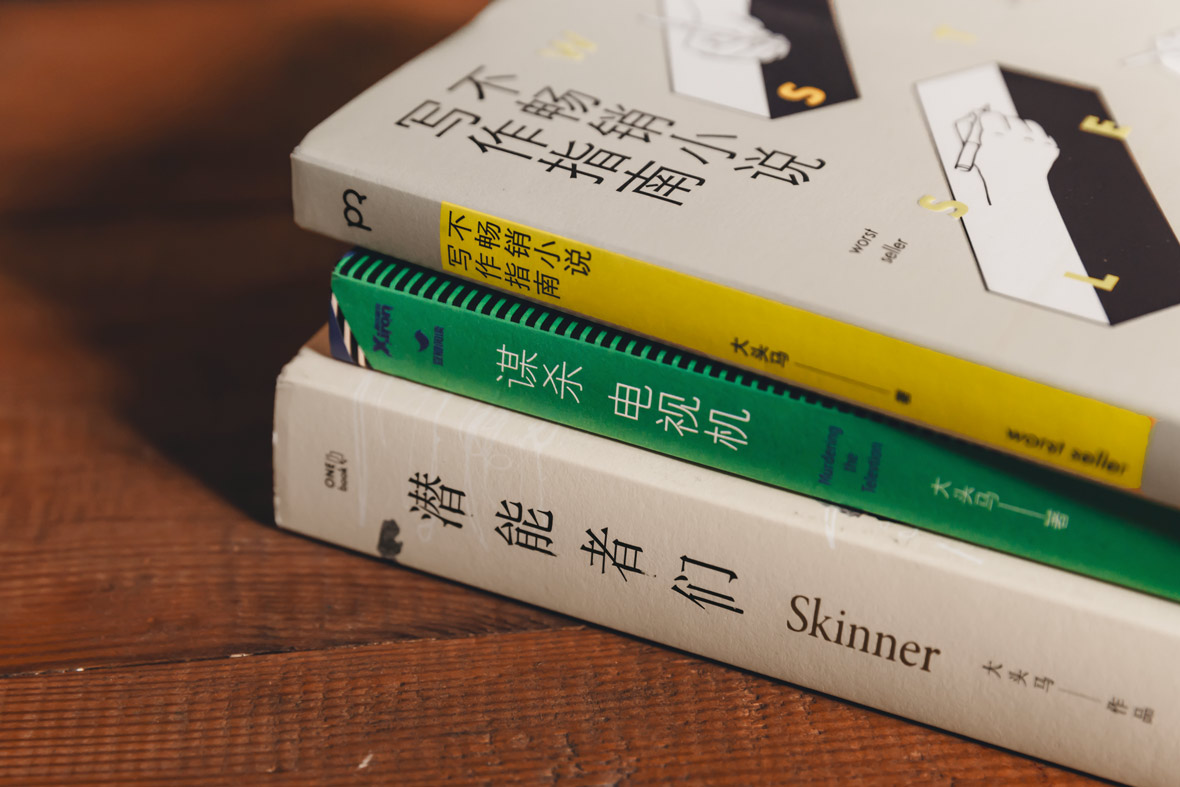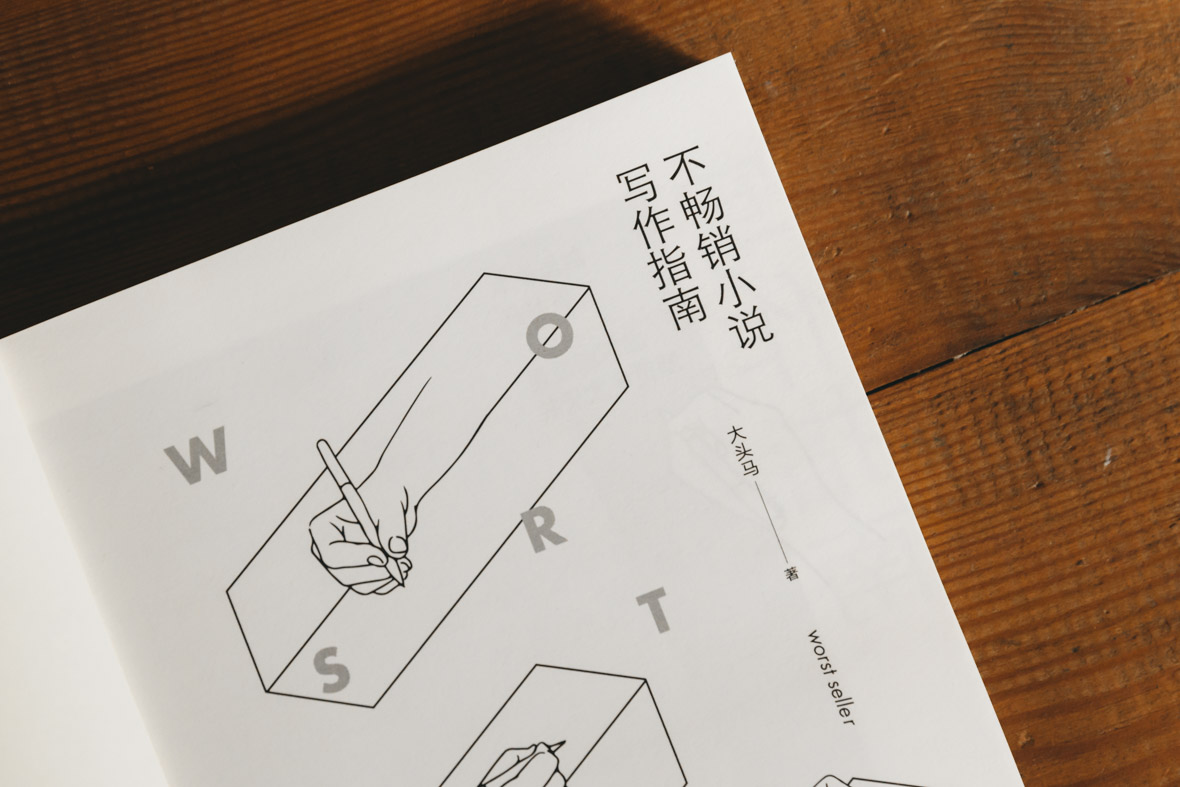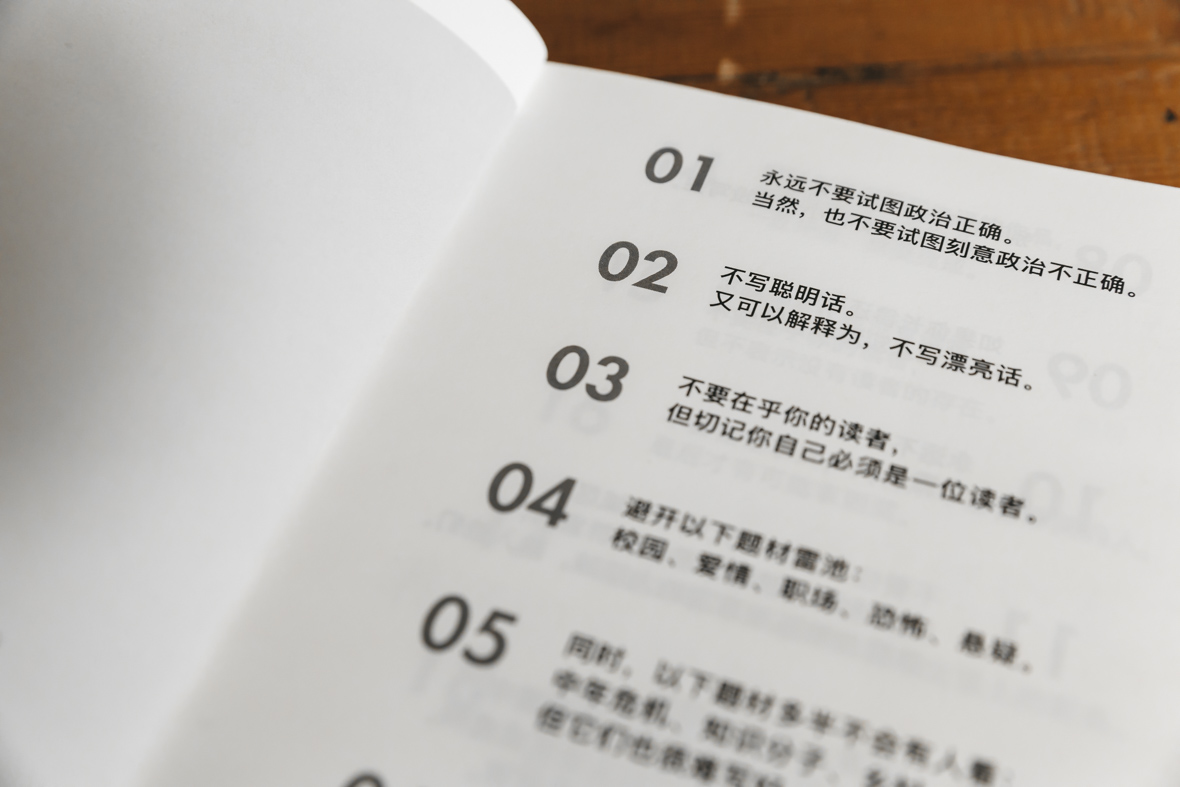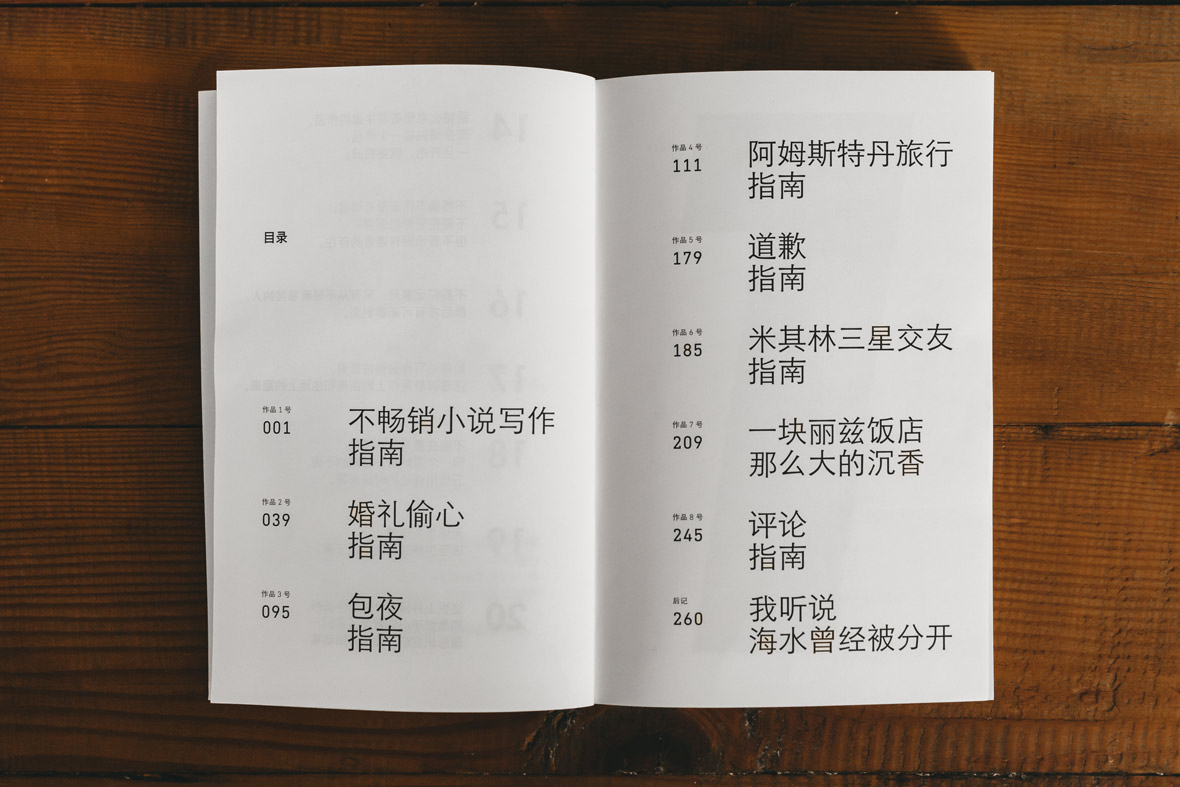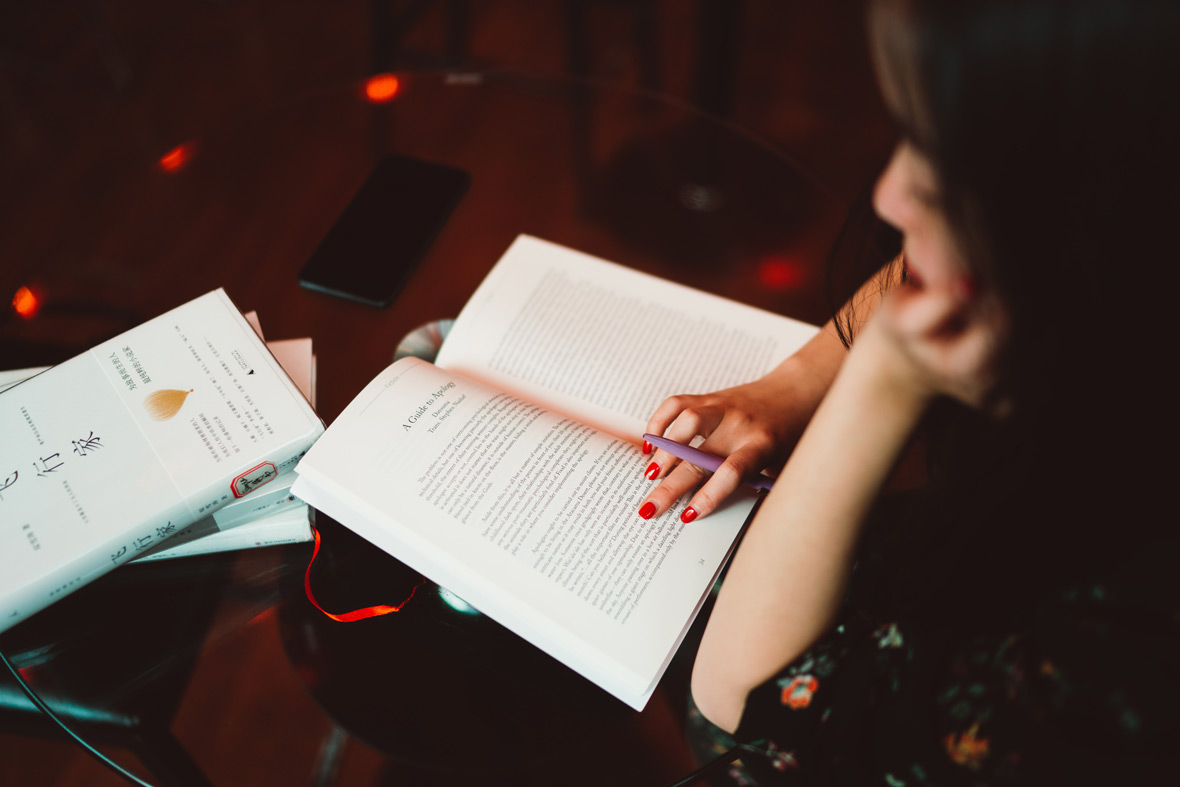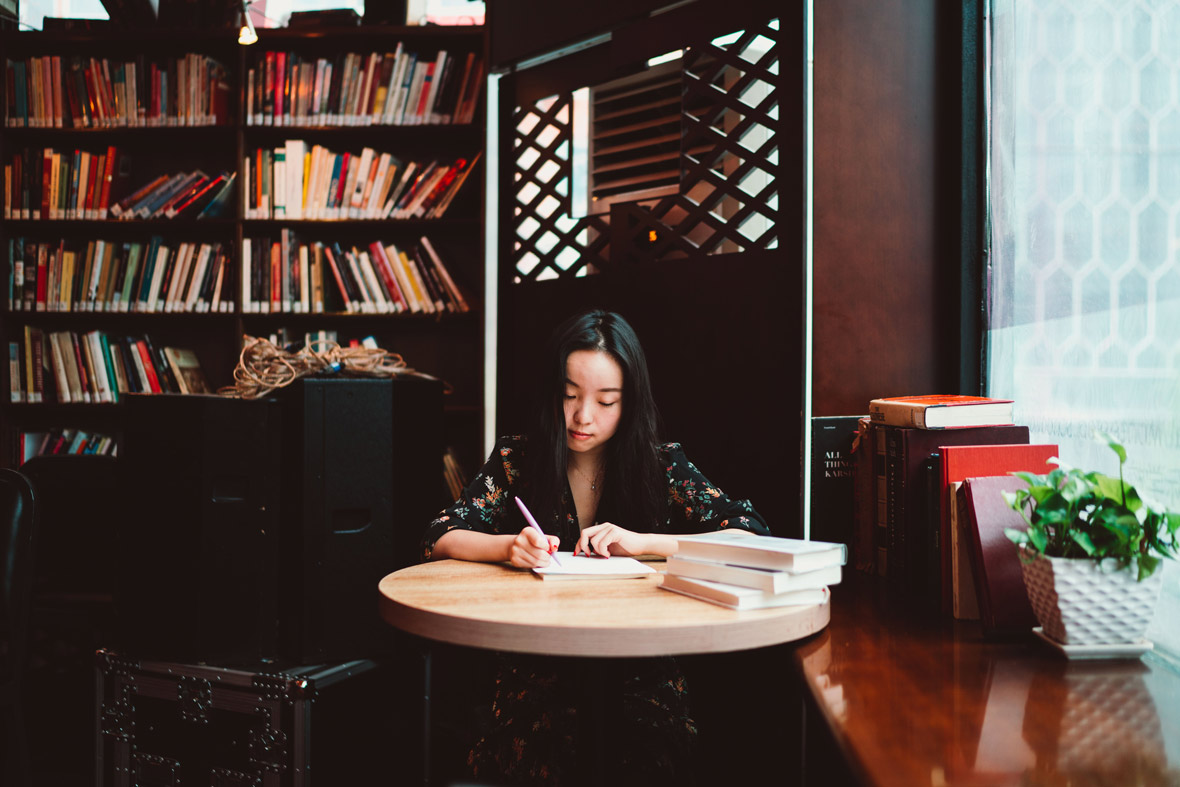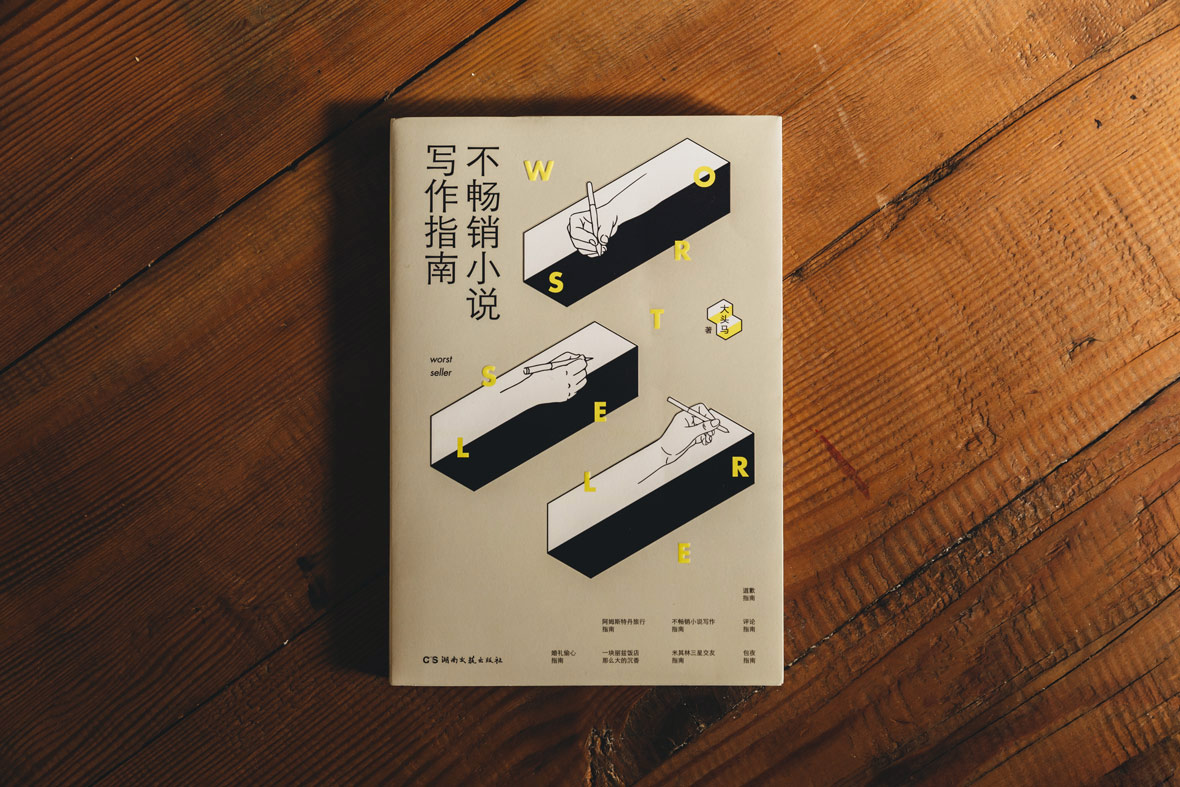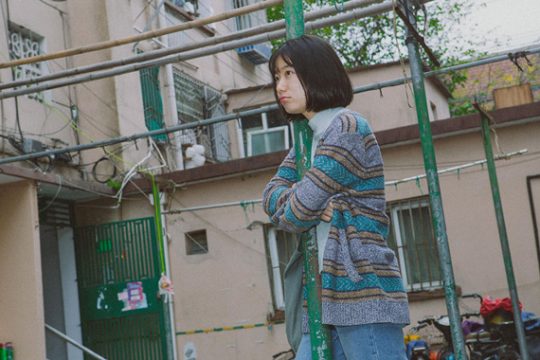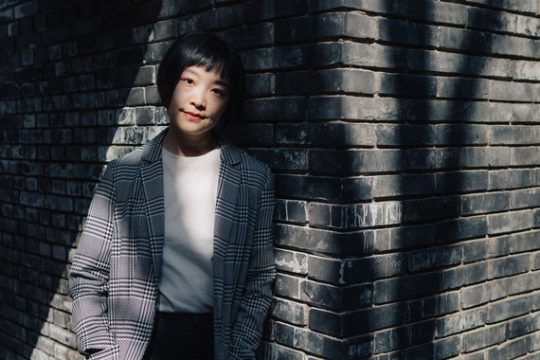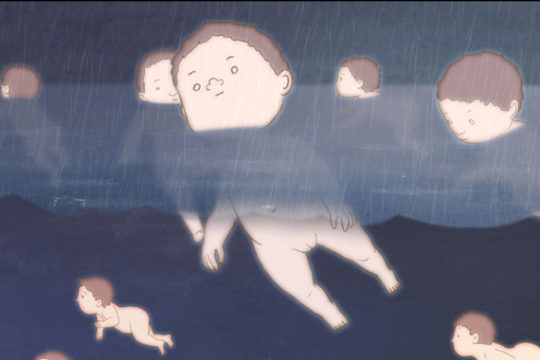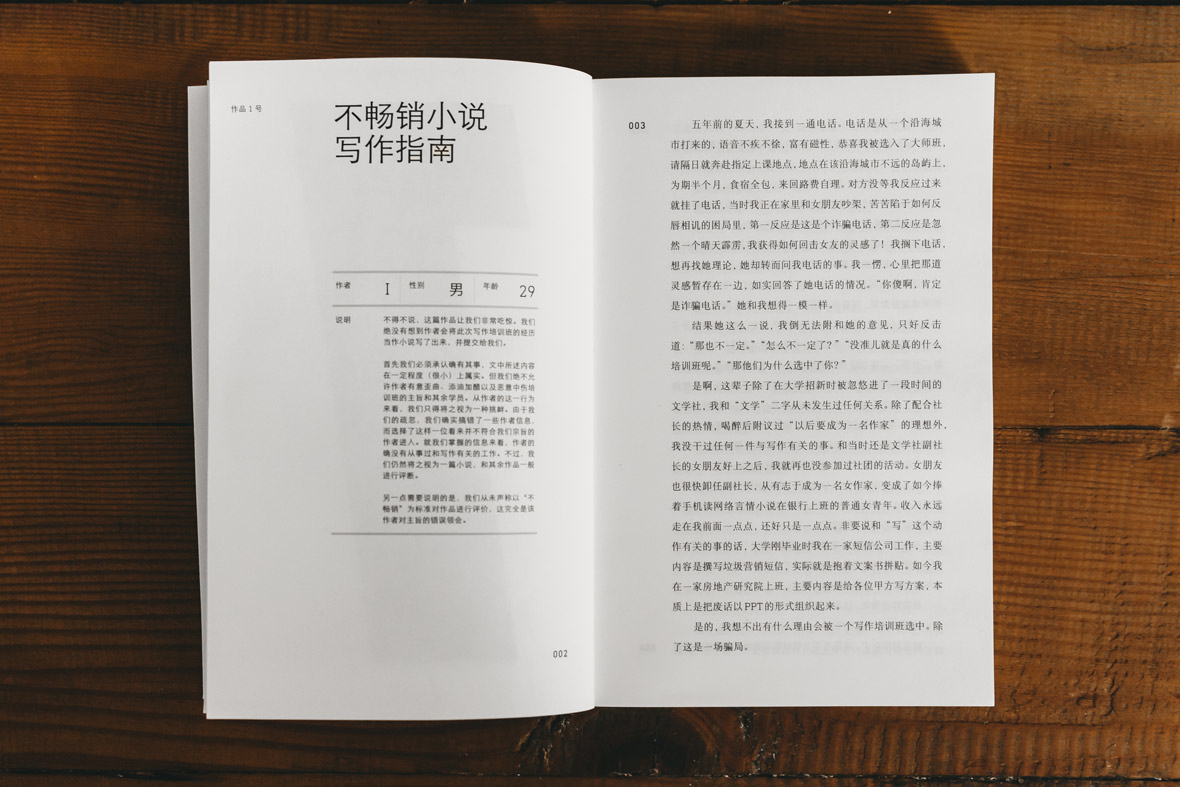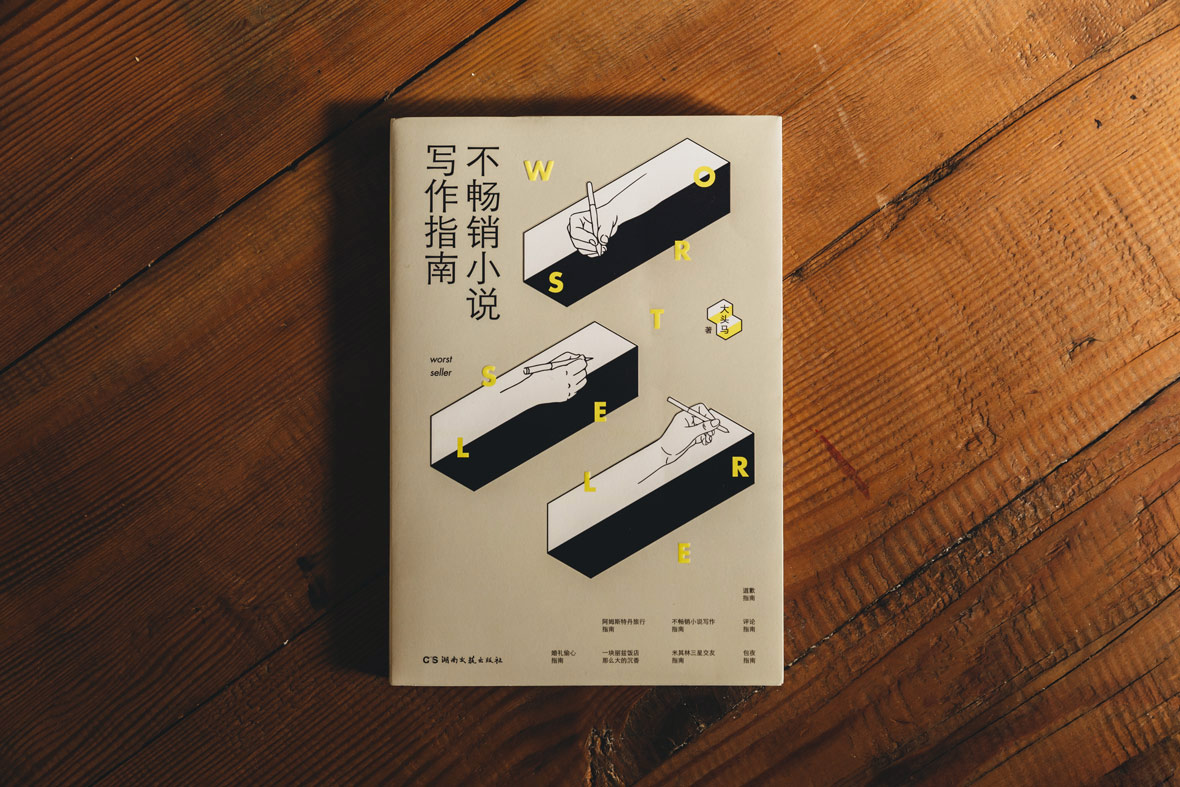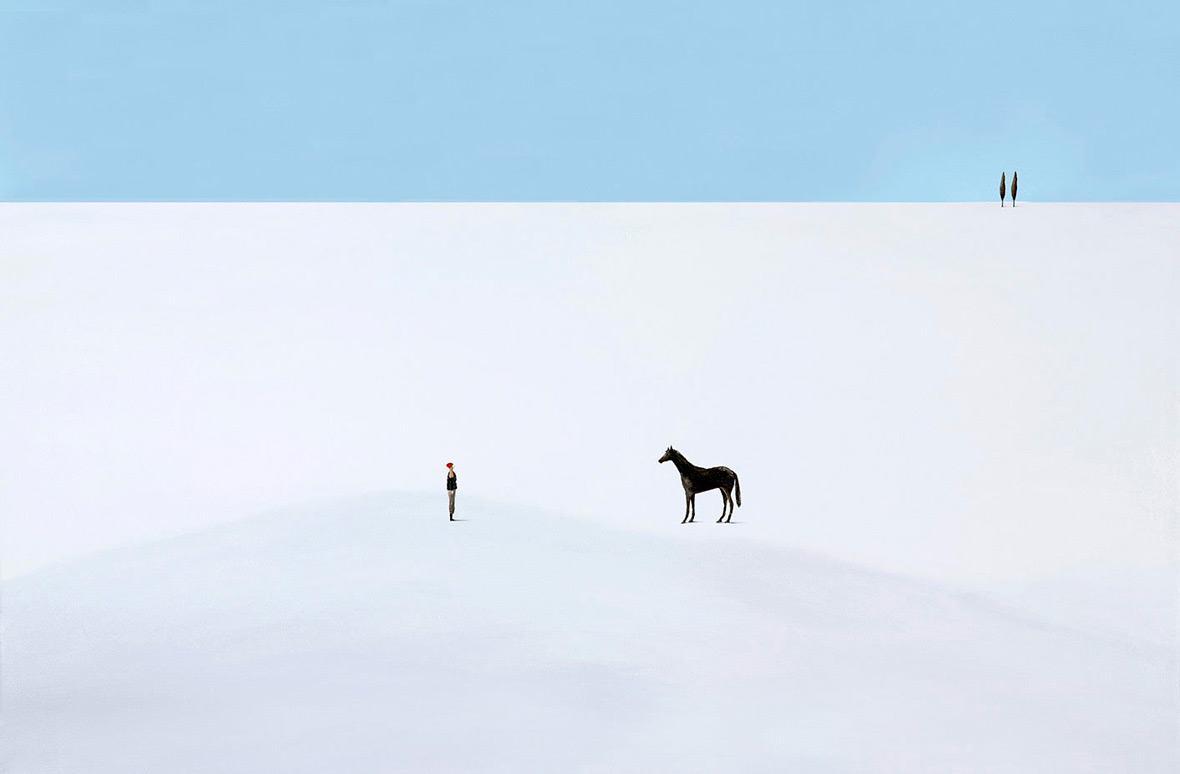
A tiny figure in a dark coat and red hat stands in the center of a vast white space, as if lost in the middle a snow-covered plain. At the top of the frame, a flat, powder-blue band indicates the sky, while a gray tint in the foreground and pair of trees in the distance add minimal texture to the landscape. Not far from the figure stands a horse. The two regard each other with ambivalence, perhaps in an attitude of mutual defiance or mutual need. Tiny islands of color against the canvas, the human and the animal seem at once utterly alone and bound together by a shared isolation.
一个穿着深色大衣、头顶红色帽子的渺小身影,站在一片茫茫白色世界的中心,好像在积雪覆盖的荒原中迷路了。画面最上方的一片浅蓝色代表天空,前景的一抹灰色阴影与远处的两棵树木,增添了景观的层次感。在离这个小人儿不远处,站着一匹马。人与马之间流露着一股模糊不清的游移气氛,像是在挑衅,也像是在确认彼此存在的需要。小人儿与马占去了画布上两个细小的色块,他们是独立的,却又因为这种共同的孤独而联系在一起。
Thai artist Yozanun Suntur Wutigonsombutkul, better known simply as Suntur, was born and raised in Bangkok. After a few years working writing copy at an advertising agency, in 2015 he decided to take the leap and devote himself full-time to his art. His work has earned him a large fan base, as well as exhibitions in his hometown and in Hong Kong. Two years ago he took an even bigger leap and moved to New York by himself. Since then, Suntur has embraced a pared-down style that seems to radiate a deep quiet, almost as though he had set out to paint silence. This style was on display at his recent solo exhibition, fittingly titled Zero Decibel, at the Yelo Gallery in Bangkok.
泰国艺术家 Yozanun Suntur Wutigonsombutkul 更为人熟知的名字是 Suntur ,他在曼谷出生和长大。在广告公司工作了几年后,2015 年他做了一个大胆的决定——全心投入他的艺术创作。他的作品为他吸引到了大批粉丝,曾在泰国和香港举办过展览。两年前他又做了一个更大胆的决定——毅然决然搬到纽约生活。从那之后,Suntur 的创作开始转向一种极简风格,简洁的画面散发一股深沉的静谧,仿佛他一心要画的就是寂静本身。最近,他在曼谷知名的 Yelo 画廊 举办了个人作品展,取了个贴切的名字为《Zero Decibel》(《零分贝》)。
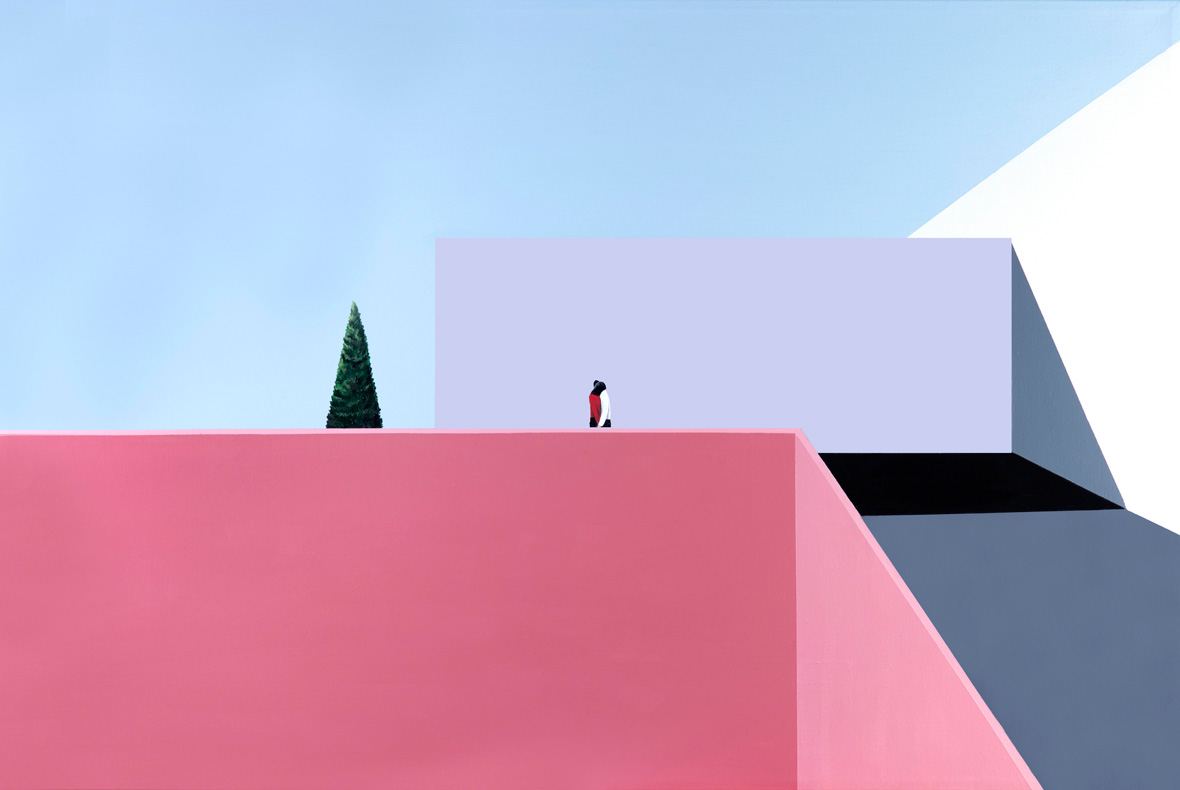
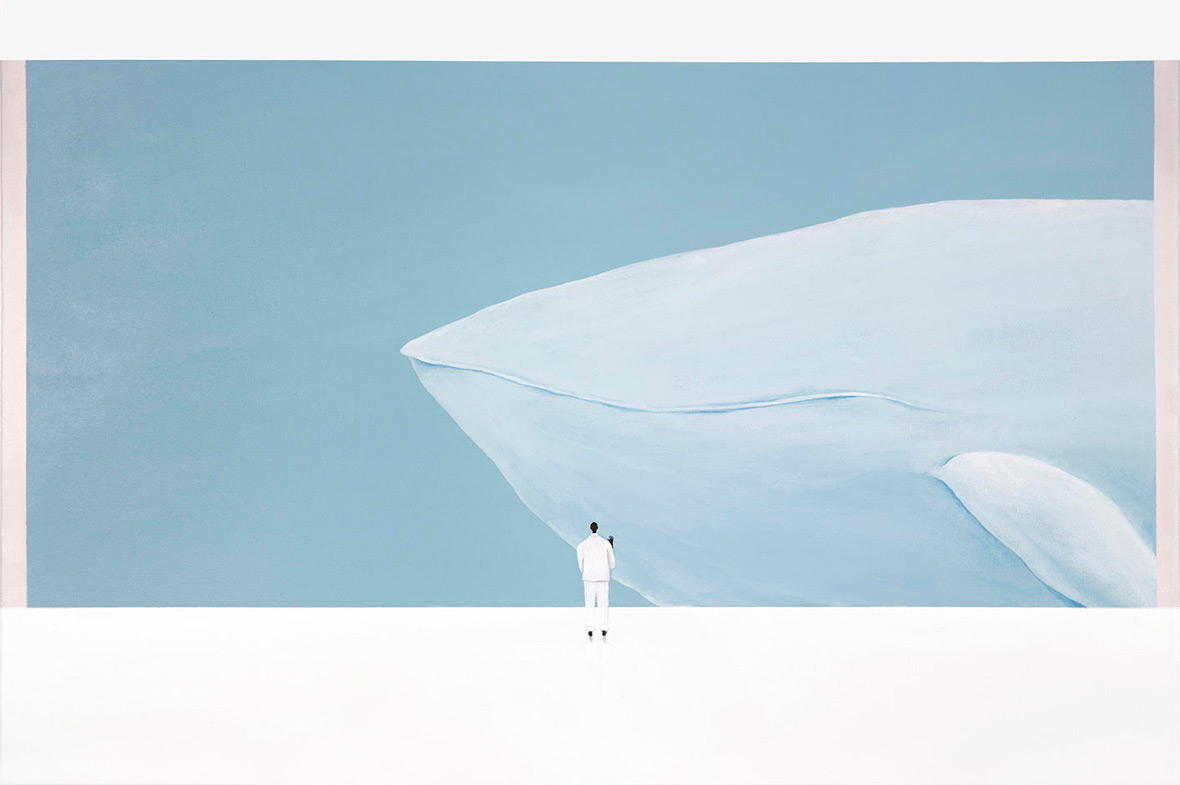
Nearly all of the paintings in the Zero Decibel series feature small figures, often alone, that are dwarfed by an enormous backdrop of solid colors and geometric shapes. One image depicts a lone figure on a charcoal-color landscape under a jet-black sky. A few strips of gray define the horizon, and the piercing yellow ray of a flashlight provides the sole concession to color in the painting. Almost abstract in its simplicity, this image, like many in the series, conveys a sharp sense of isolation. Its near-emptiness carries a powerful emotional charge.
《Zero Decibel》中几乎每幅作品都有一个单独的人,与之形成对比的是一大片的单一色块与几何形状。其中一幅作品,一个孤独的身影站在一片灰炭色风景中,天空也是一片乌黑。一抹灰色笔触定义了地平线,电筒发出的黄色光线成为画面中唯一的亮色彩。这幅画简单得近乎抽象,正如系列中许多作品一样,传达出强烈的孤独感。近乎空虚的画面引发观者强烈的情绪反应。
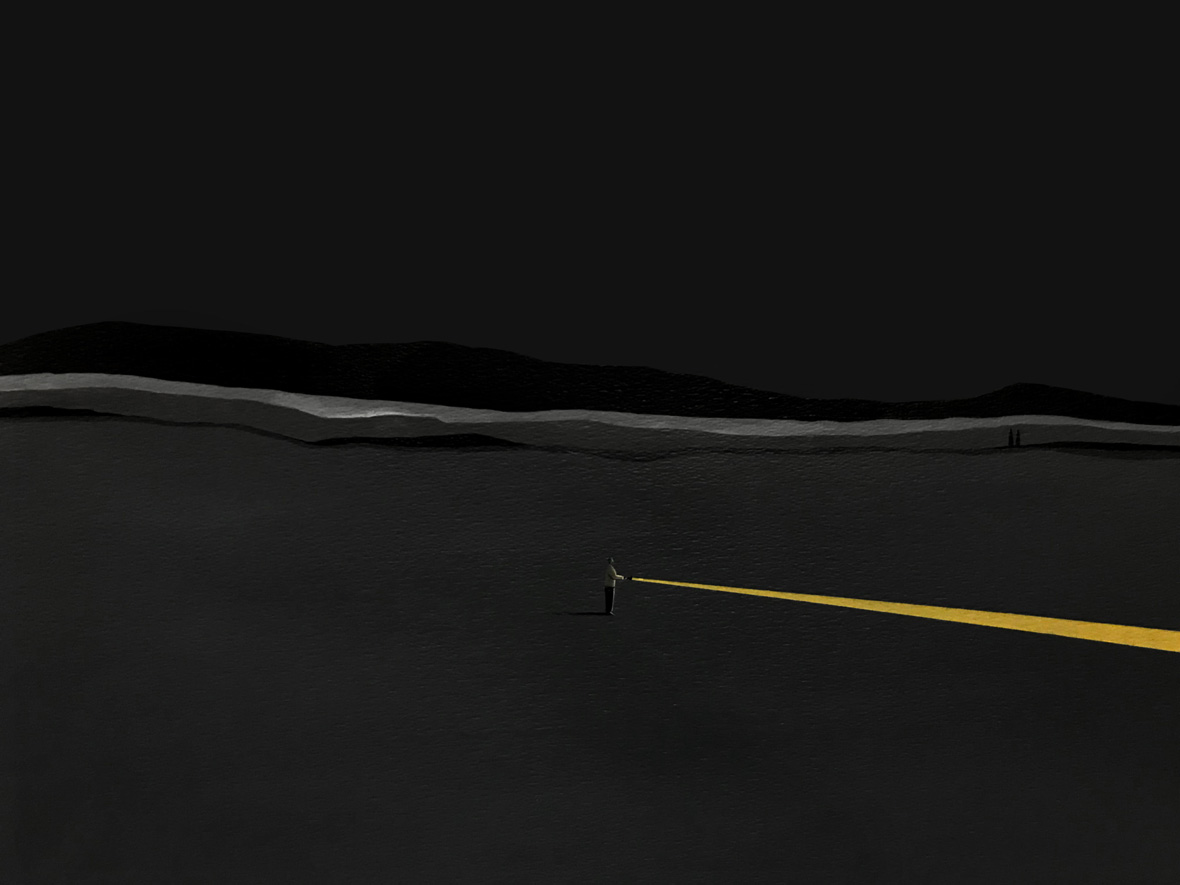
This emotional impact is perhaps a new feature of Suntur’s art. Much of his earlier work consists of cute, carefree images on a blank backdrop — balloons, palm trees, cottages, faces, composed in the sort of whimsical illustrations you’d see on a letterpress greeting card. In Zero Decibel, his style feels more refined. “I think I’m changing, growing up,” he says. “Many things have changed, like the medium, from watercolor to acrylic, and the size, from small sheets of paper to large canvases.”
这种情感冲击也许是 Suntur 艺术创作的一个新特点。他早期的许多作品都是在空白背景下一些可爱的图像,譬如气球、棕榈树、小屋和脸,充满异想天开的插图,就像贺卡上的画一样无忧无虑。然而在《Zero Decibel》里,他创作的风格更加精致了。他说:“我想我正在改变、成长。许多事情都改变了,譬如我创作的媒介,从水彩到丙烯酸。画的大小也变了,从小幅画纸变成大幅画布。”
Suntur’s Instagram features an enhanced, animated version of some of these images in the form of a simple GIF. Invariably cute, these animations produce a very different effect: by adding elements of a story, they remove some of the static ambiguity from which the images draw their force.
Suntur 将一部分画制作成简单的 GIF 动画并放在 Instagram 上,两种作品的表现形式都很讨人喜欢,但 GIF 能表现更加丰富的故事性,并减少静态画作中一些意义不明的模糊性。
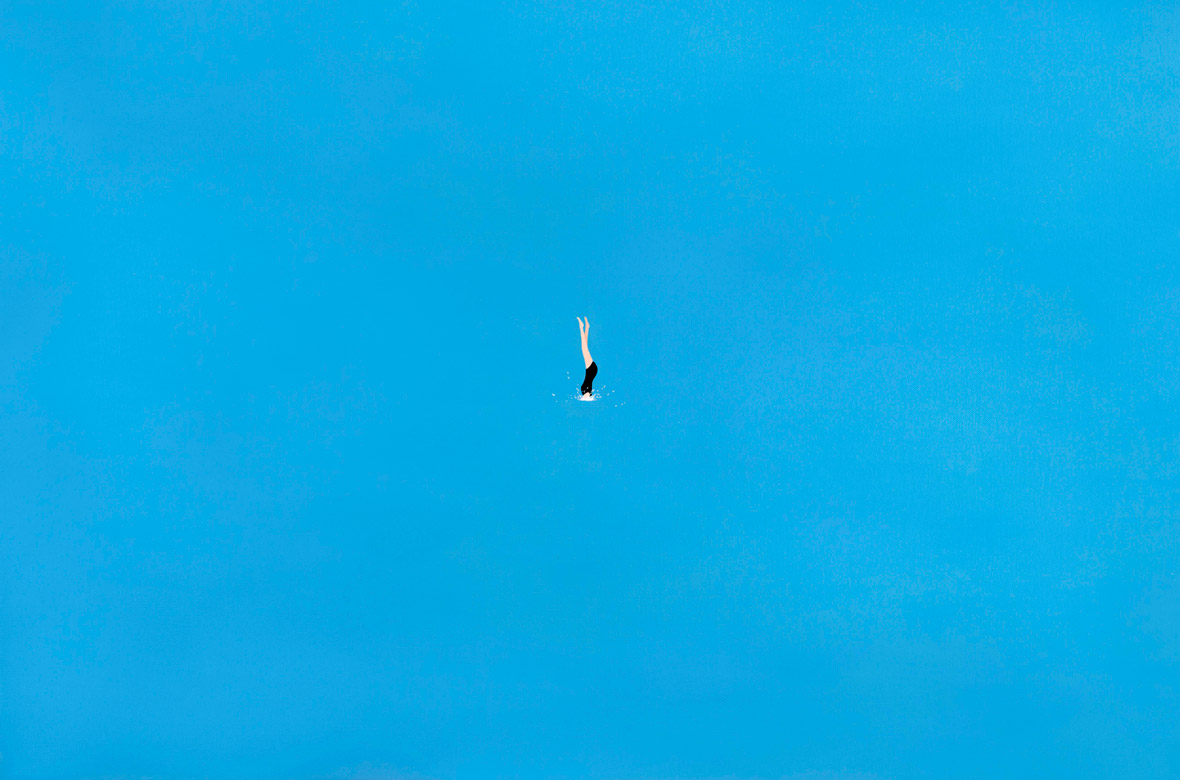
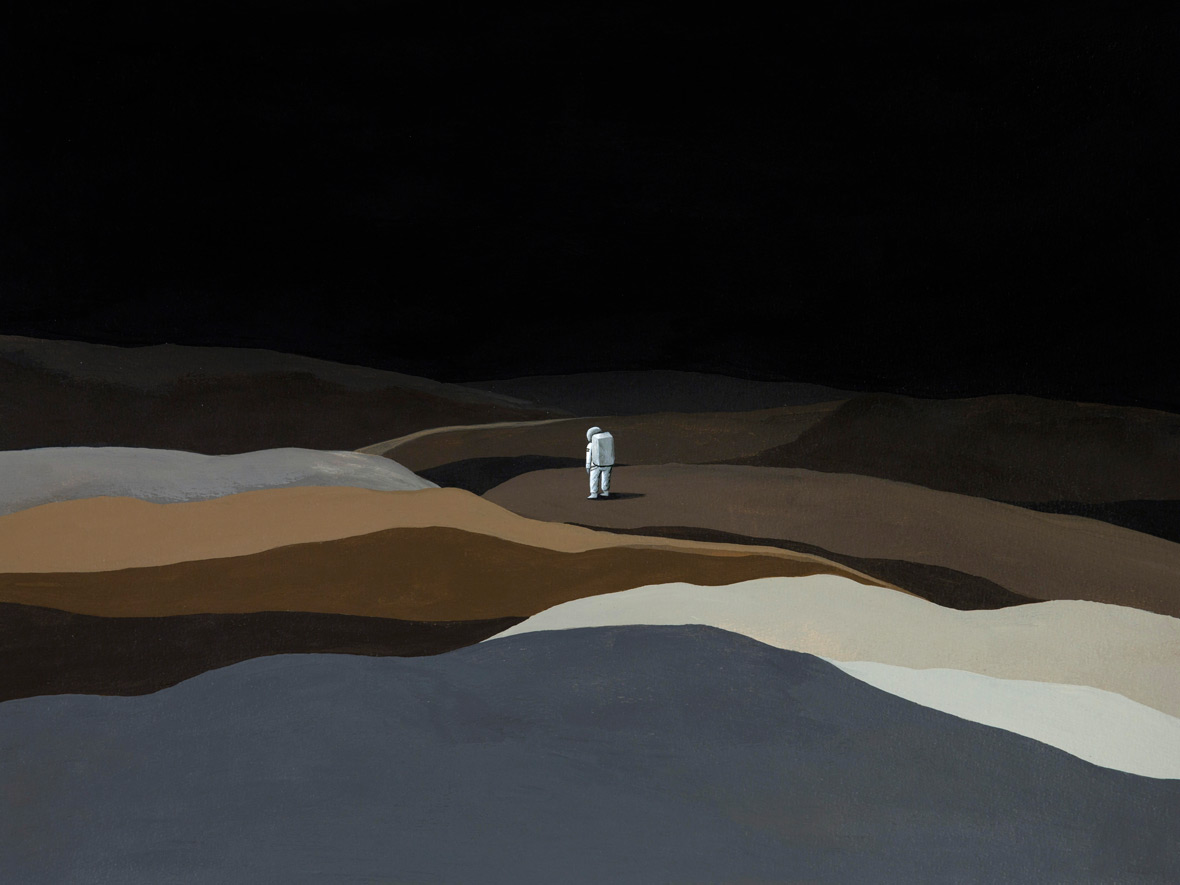
Suntur credits his move to New York for the change in his style. “I can experience different cultures, and can see art from around the world,” he says. Perhaps more importantly, the distance from his family and friends has also had an impact. “I’m far from my family, so I live by myself,” he adds. “I think the loneliness has changed my art.” If so, he’s taken his isolation and made it a source of strength. The quiet paintings in Zero Decibel turn a deceptive simplicity to devastating effect.
Suntur 说搬到纽约生活是触发他创作风格转变的主因。“我可以体验不同的文化,看到来自世界各地的艺术。” 他说。但是也许更重要的影响来自他与家人朋友之间遥远的距离。他补充道:“我离家很远,一个人住,可能是我自身的孤独改变了我的艺术。” 如果是这样的话,孤独如今已经成为了他的力量源泉。《Zero Decibel》中那些看似 “寂静无声” 的画,将一种假象式的单调转换成了震撼力十足的情感冲击。
无法观看?前往优酷
